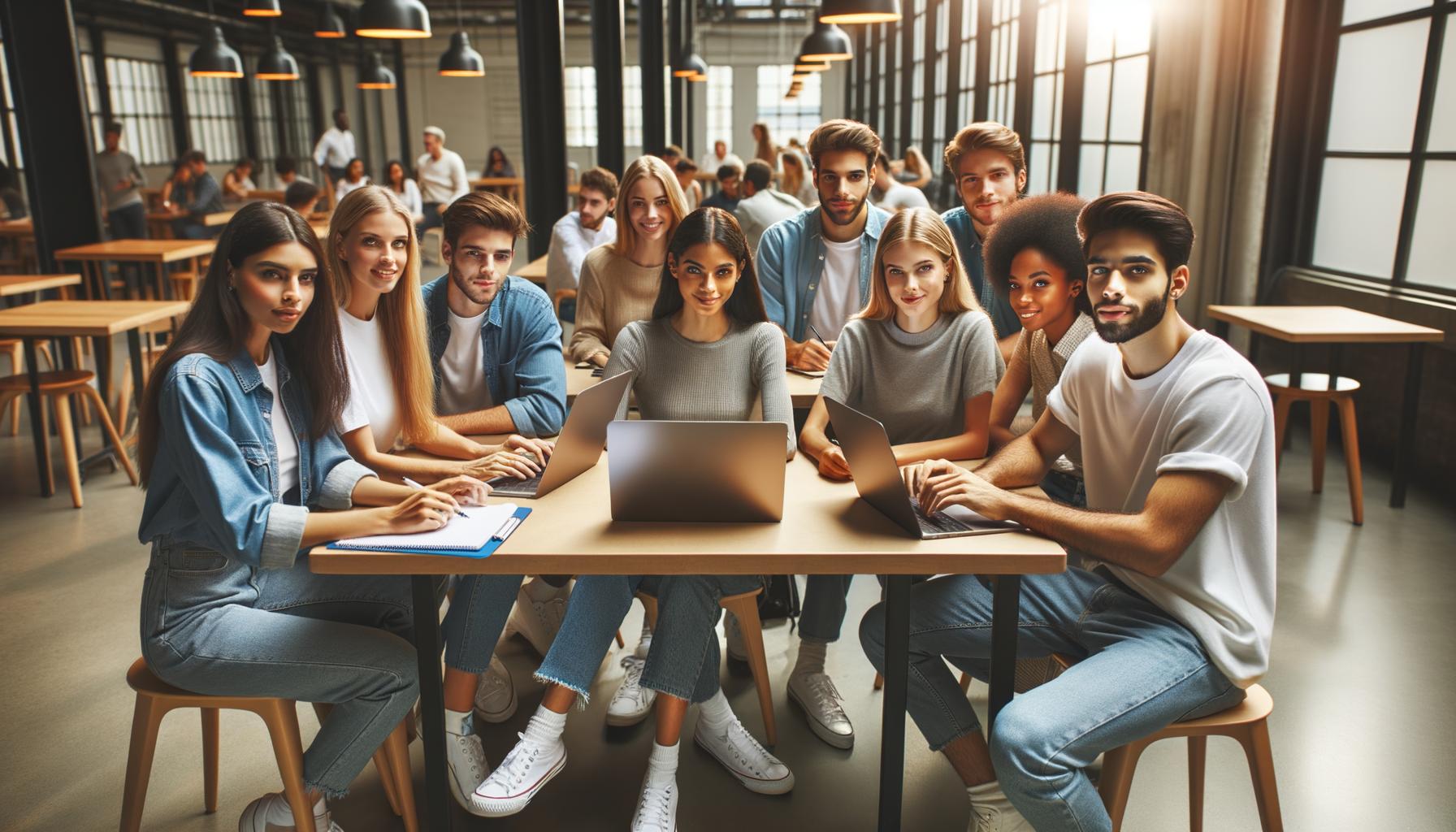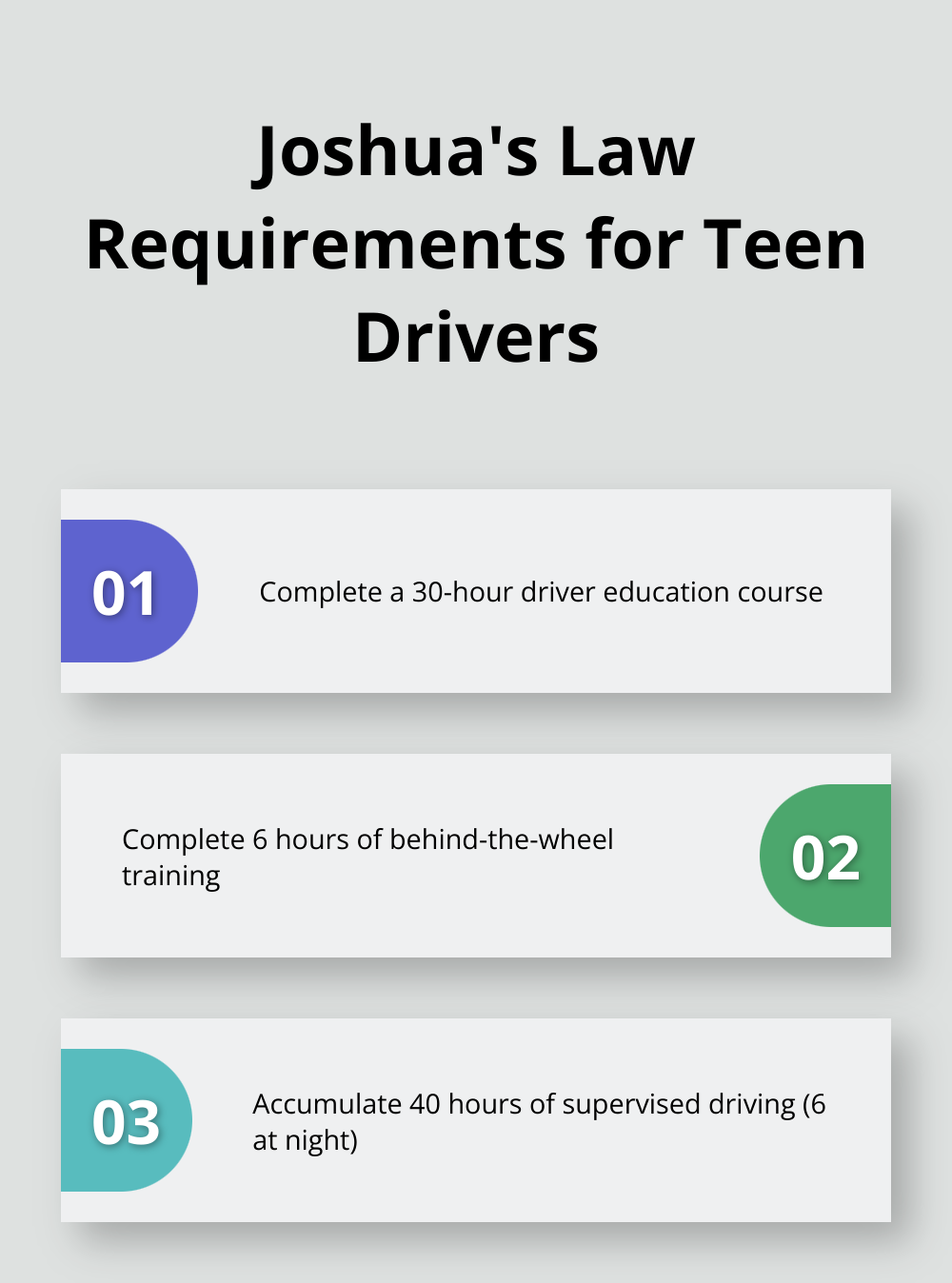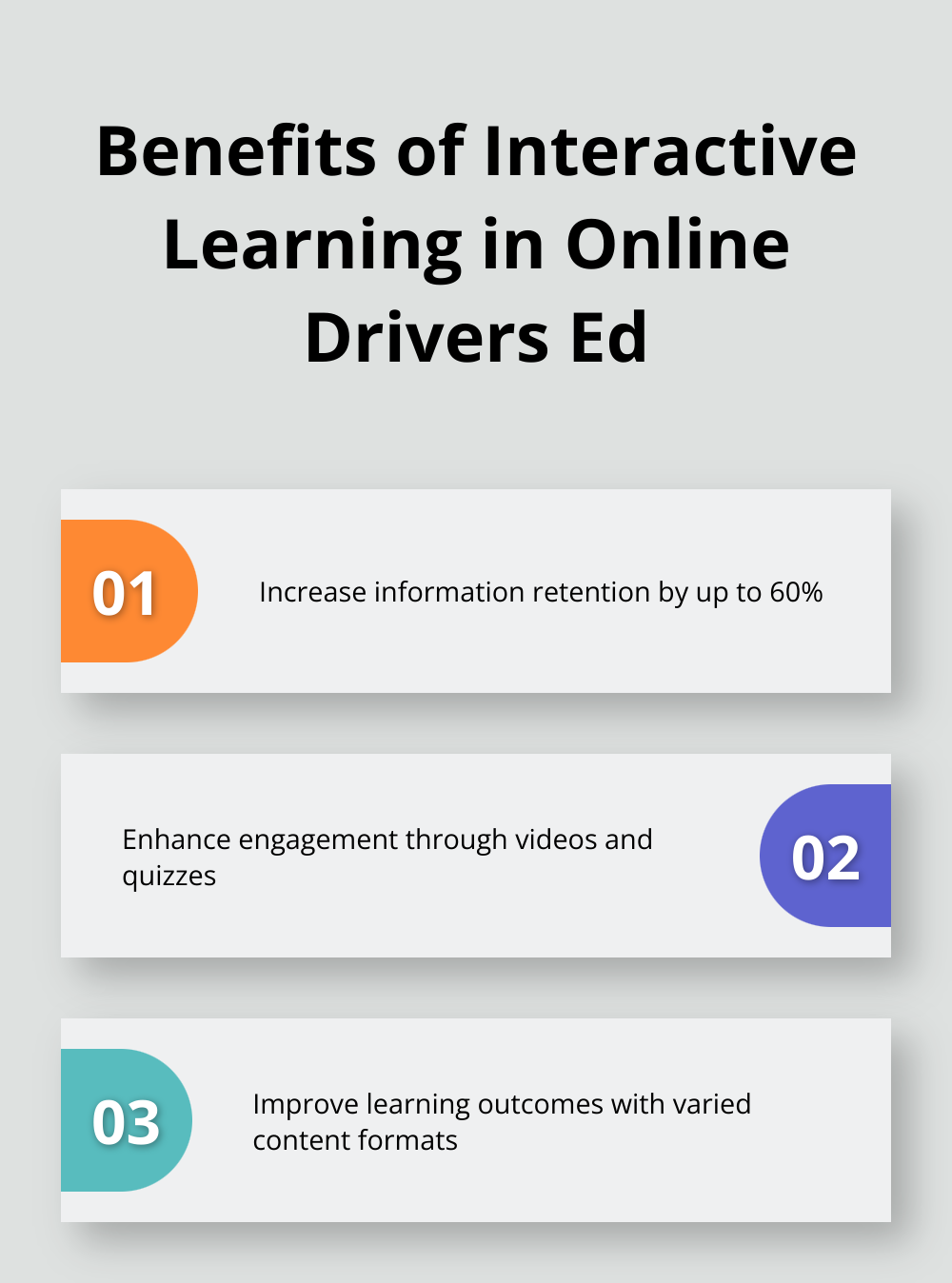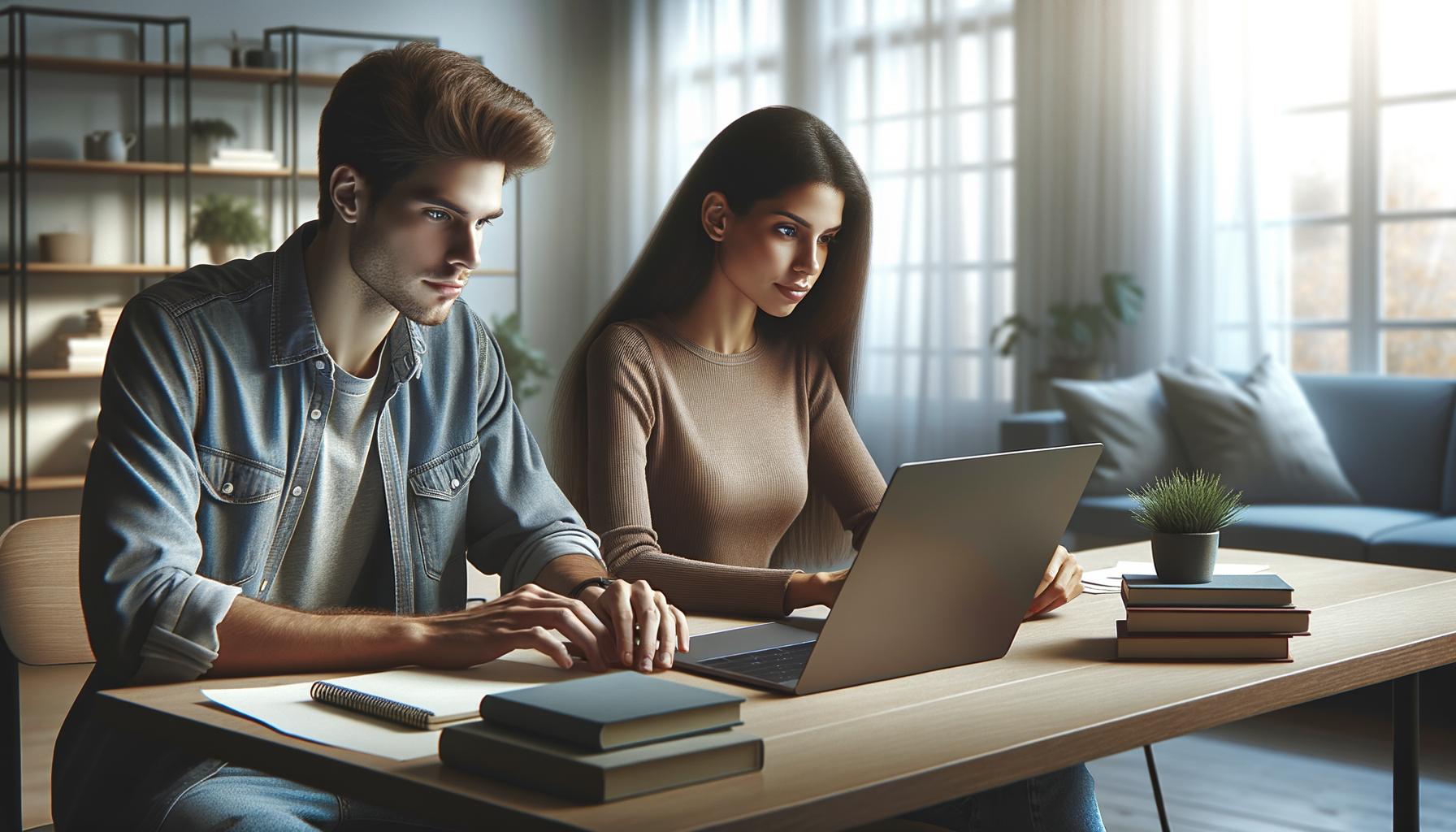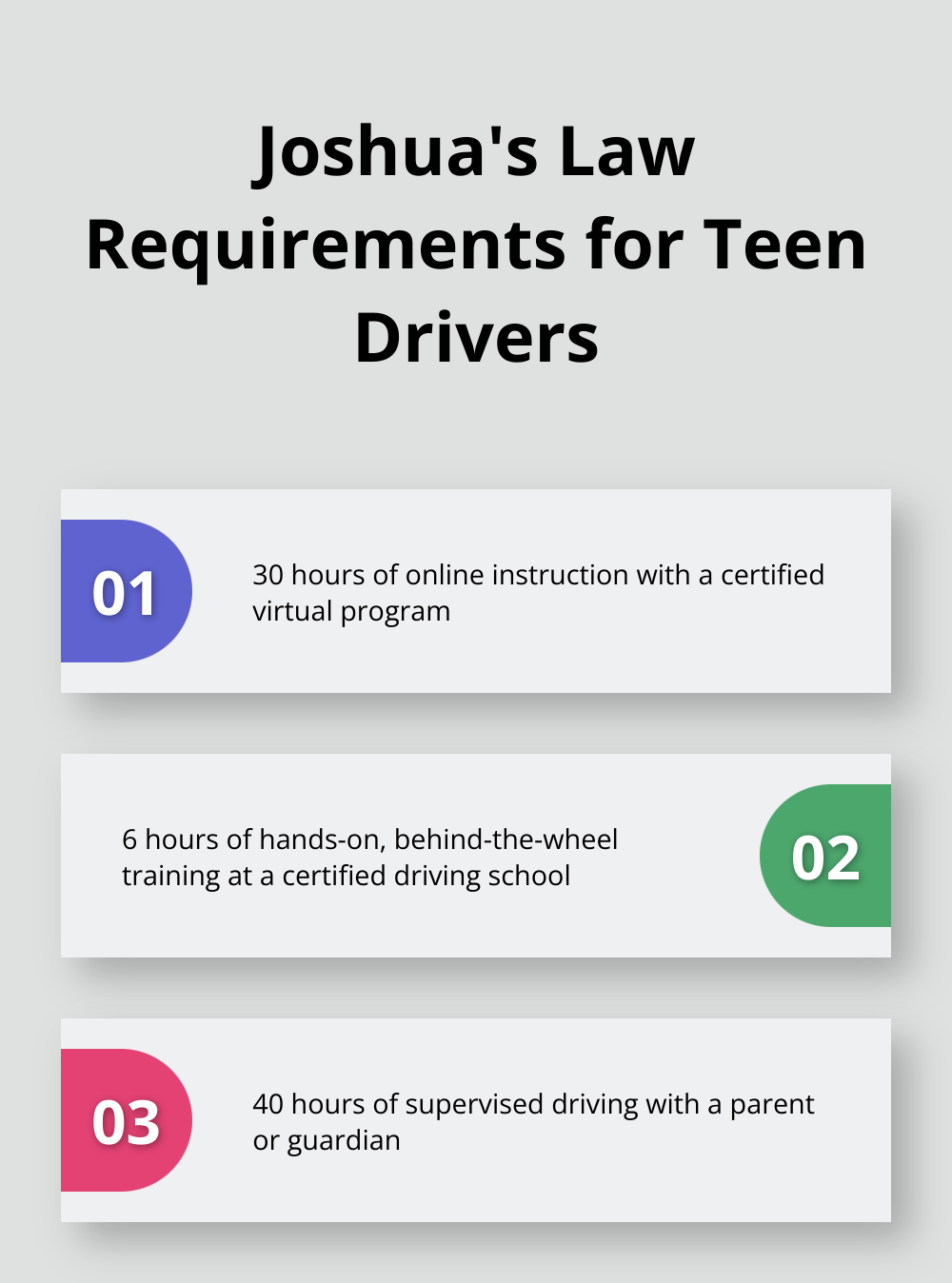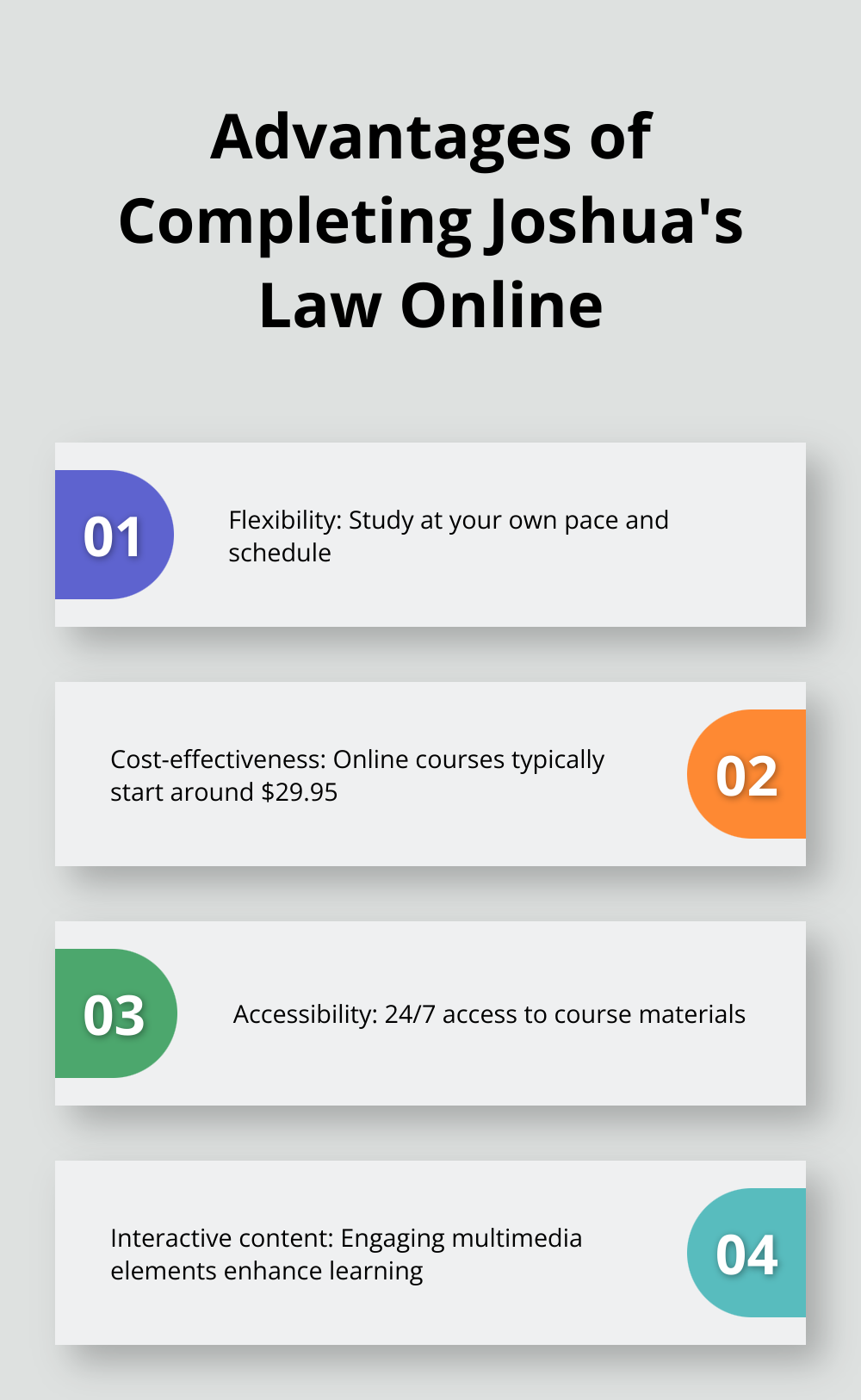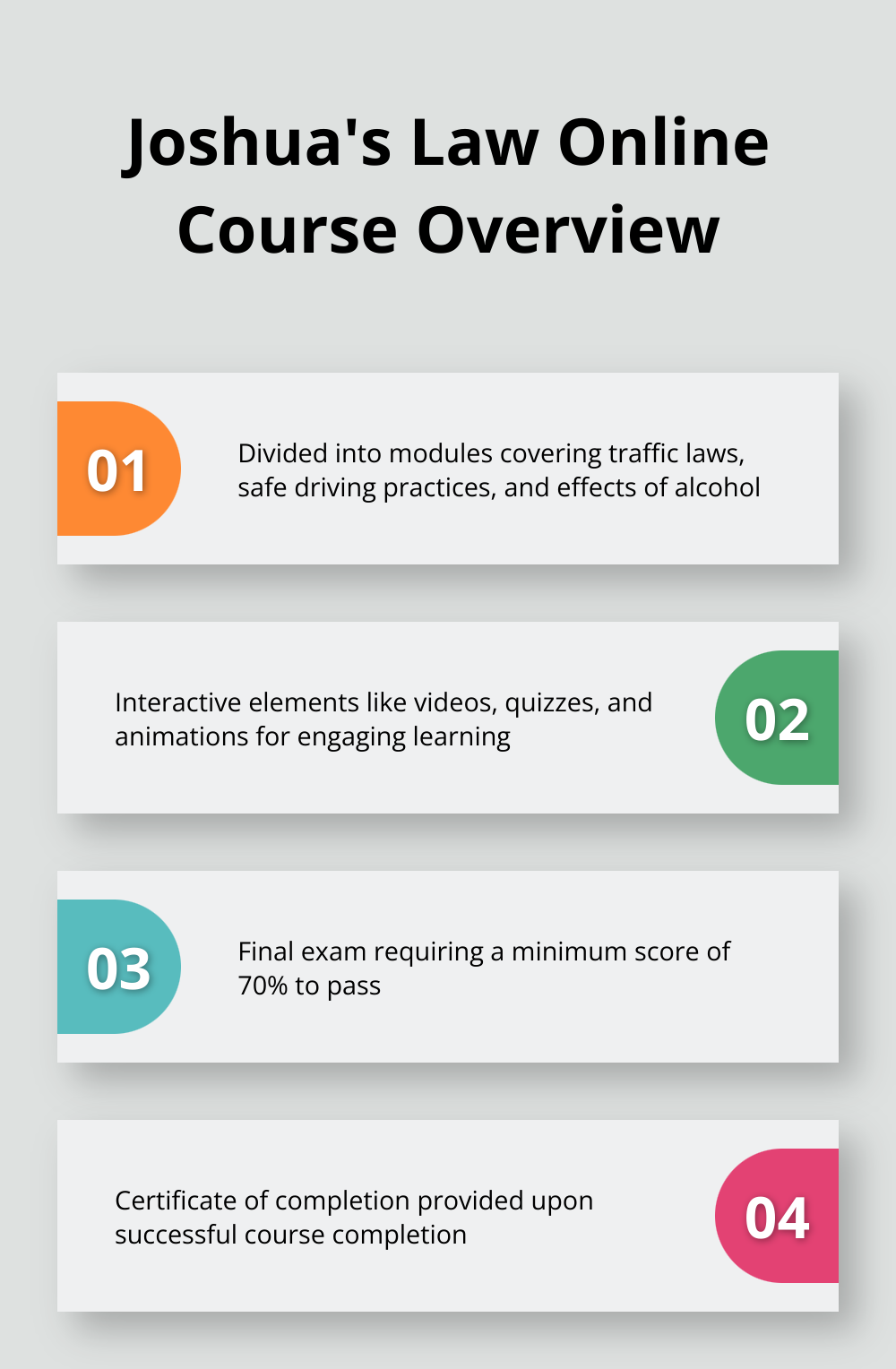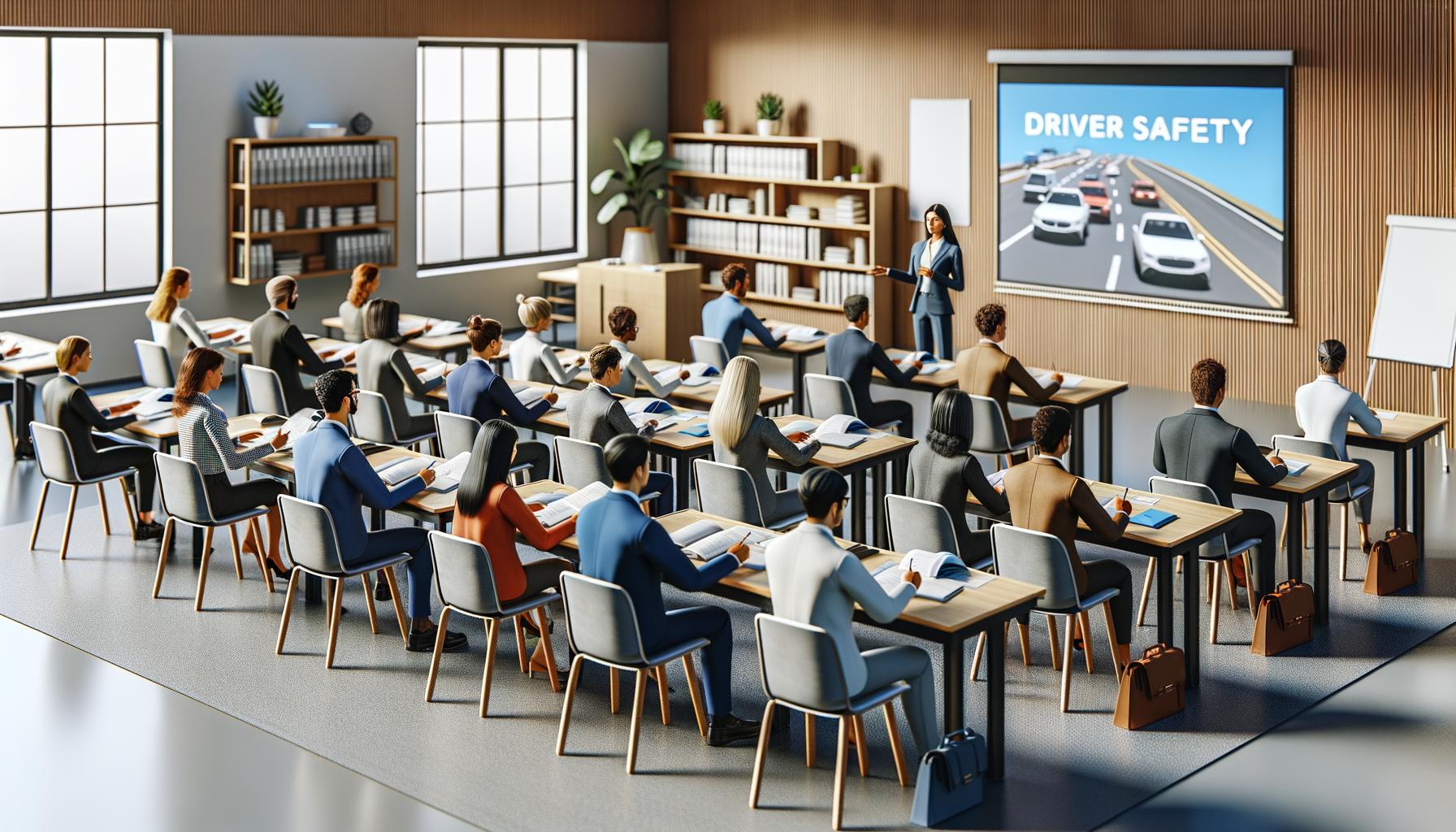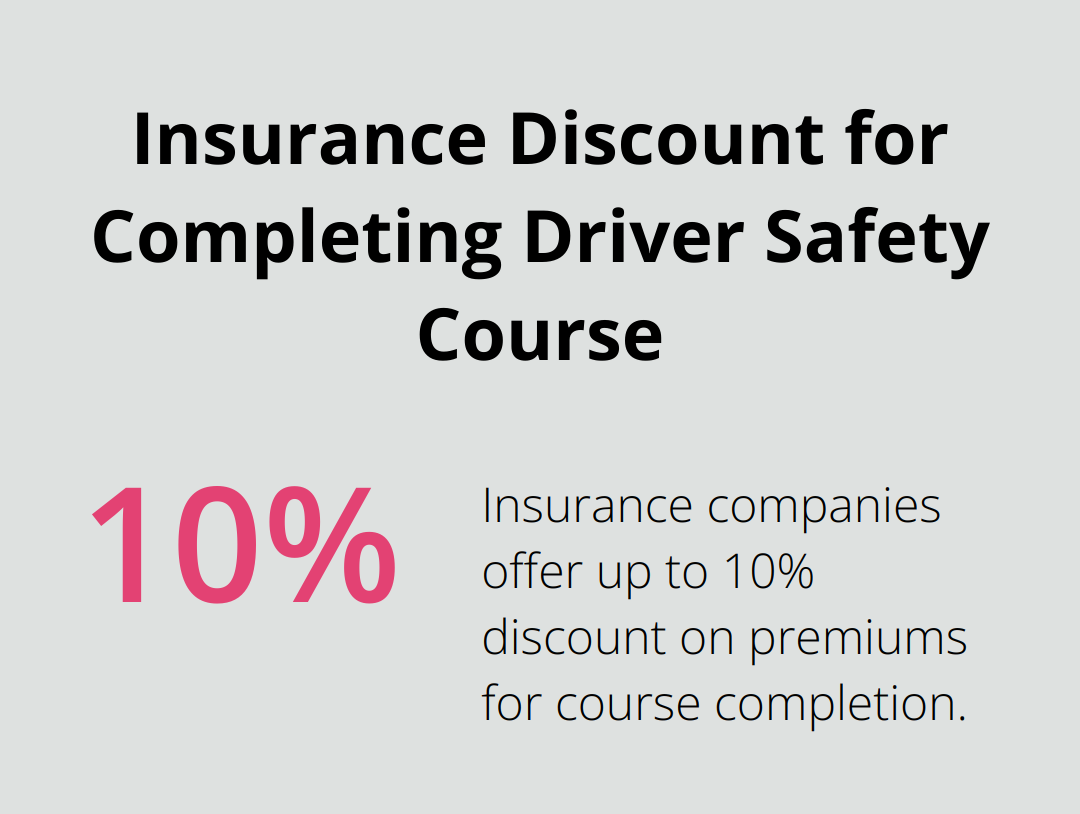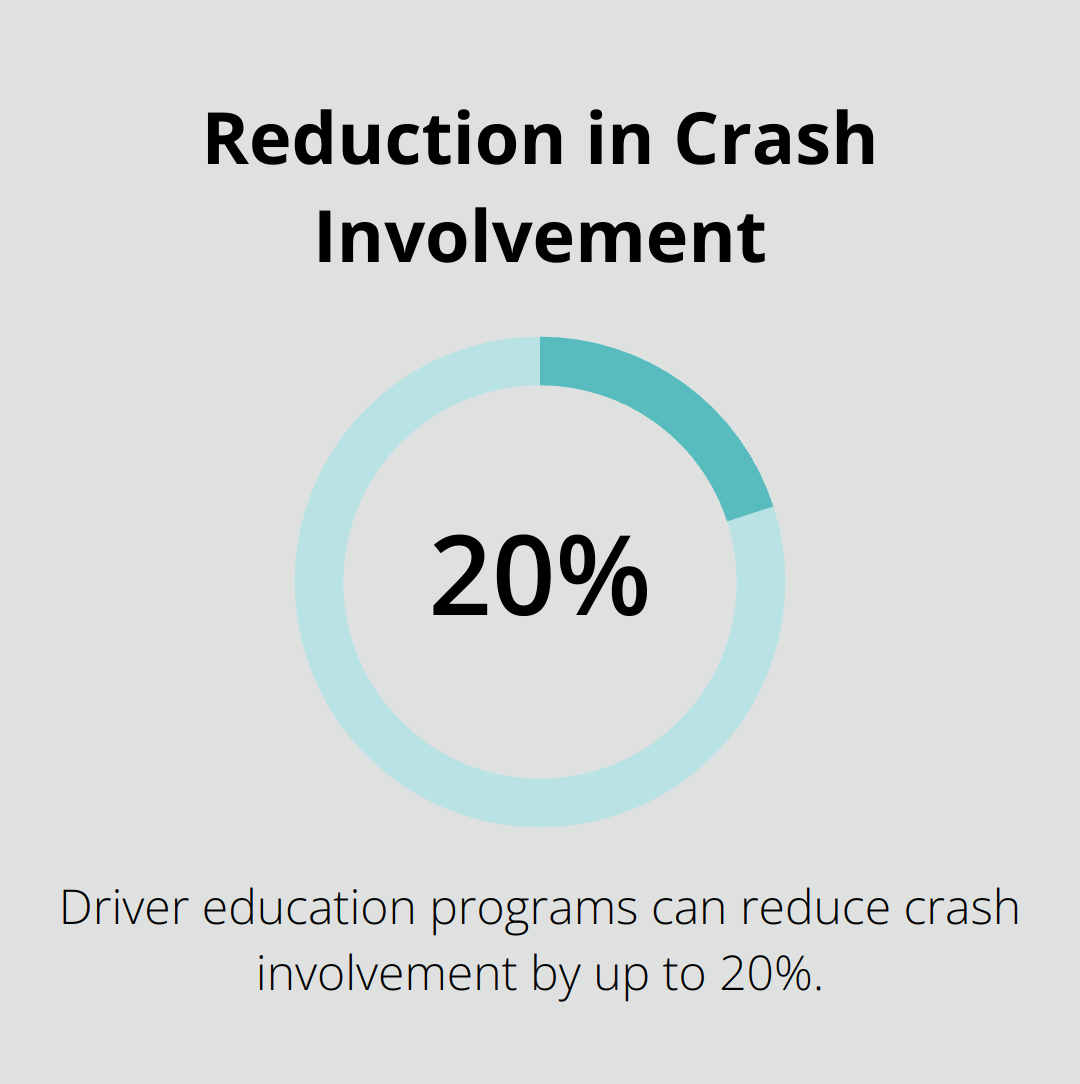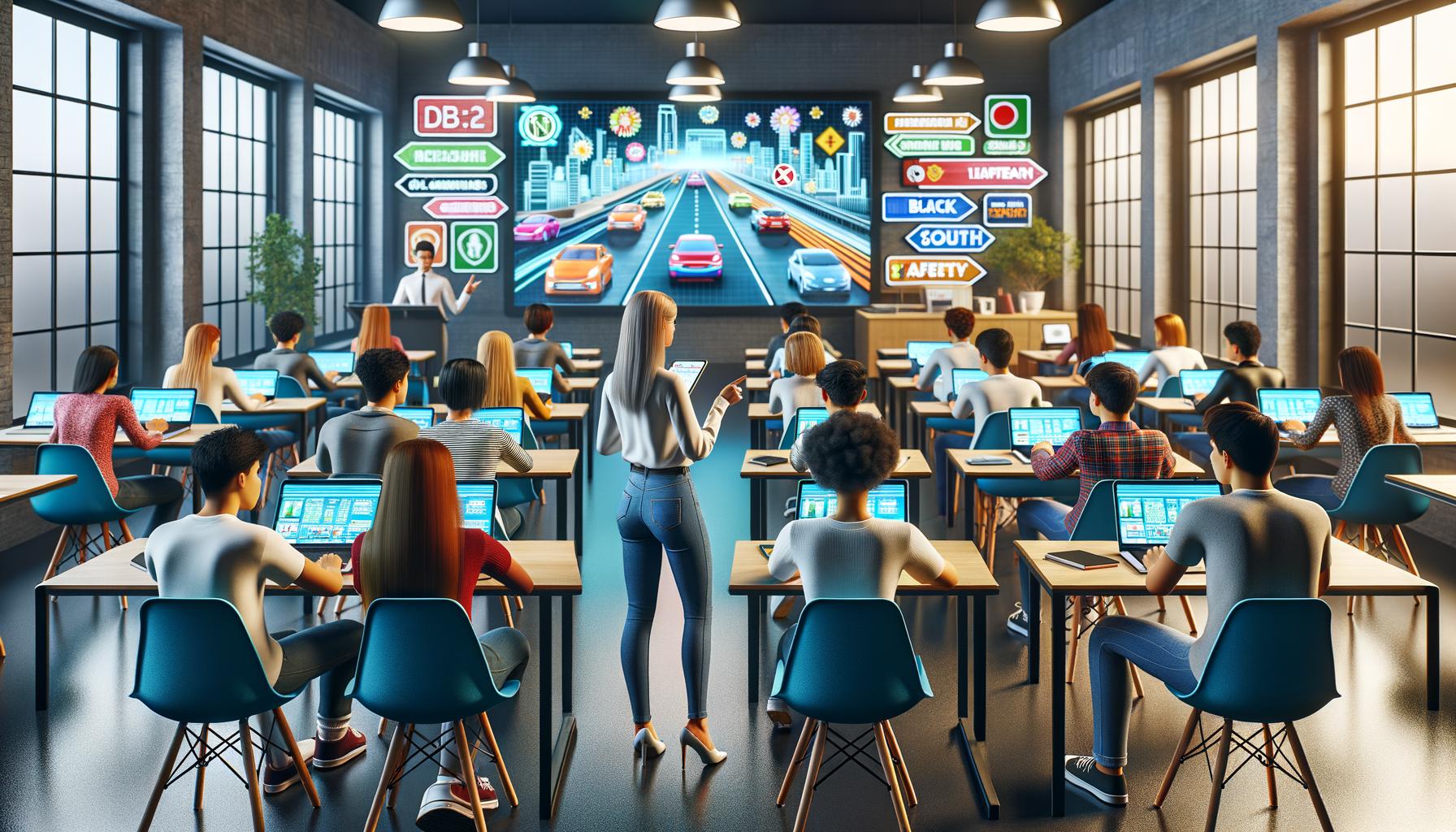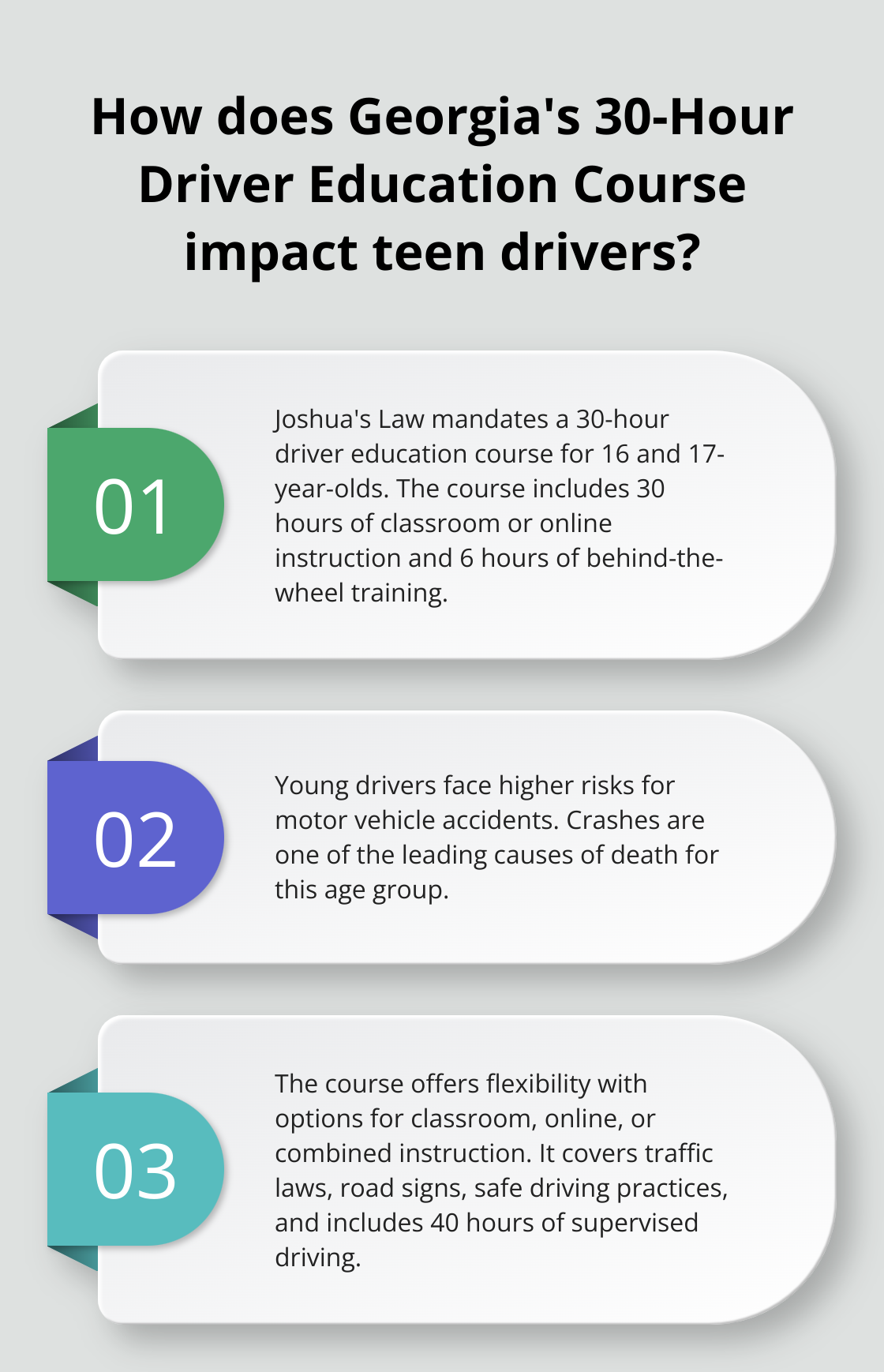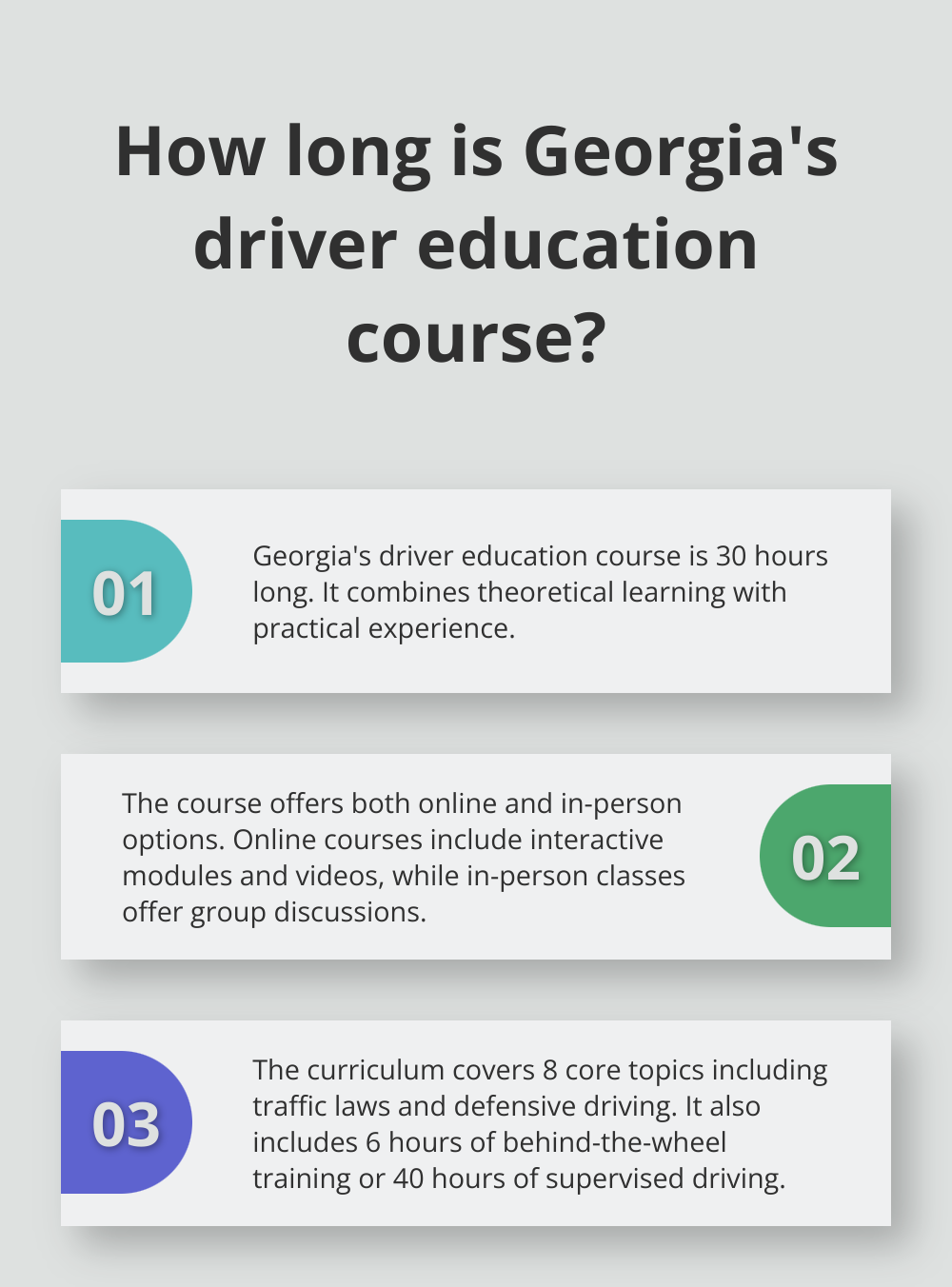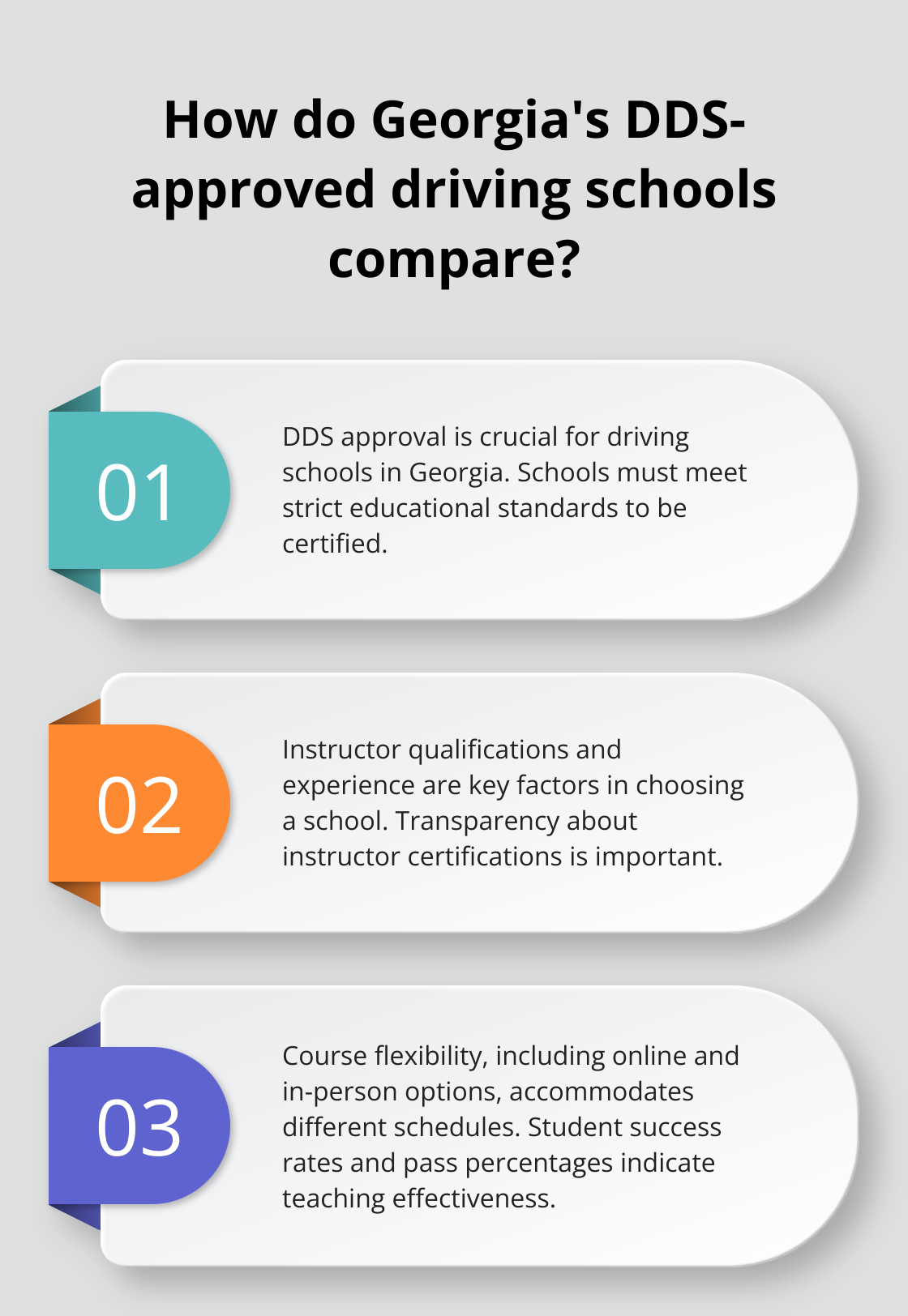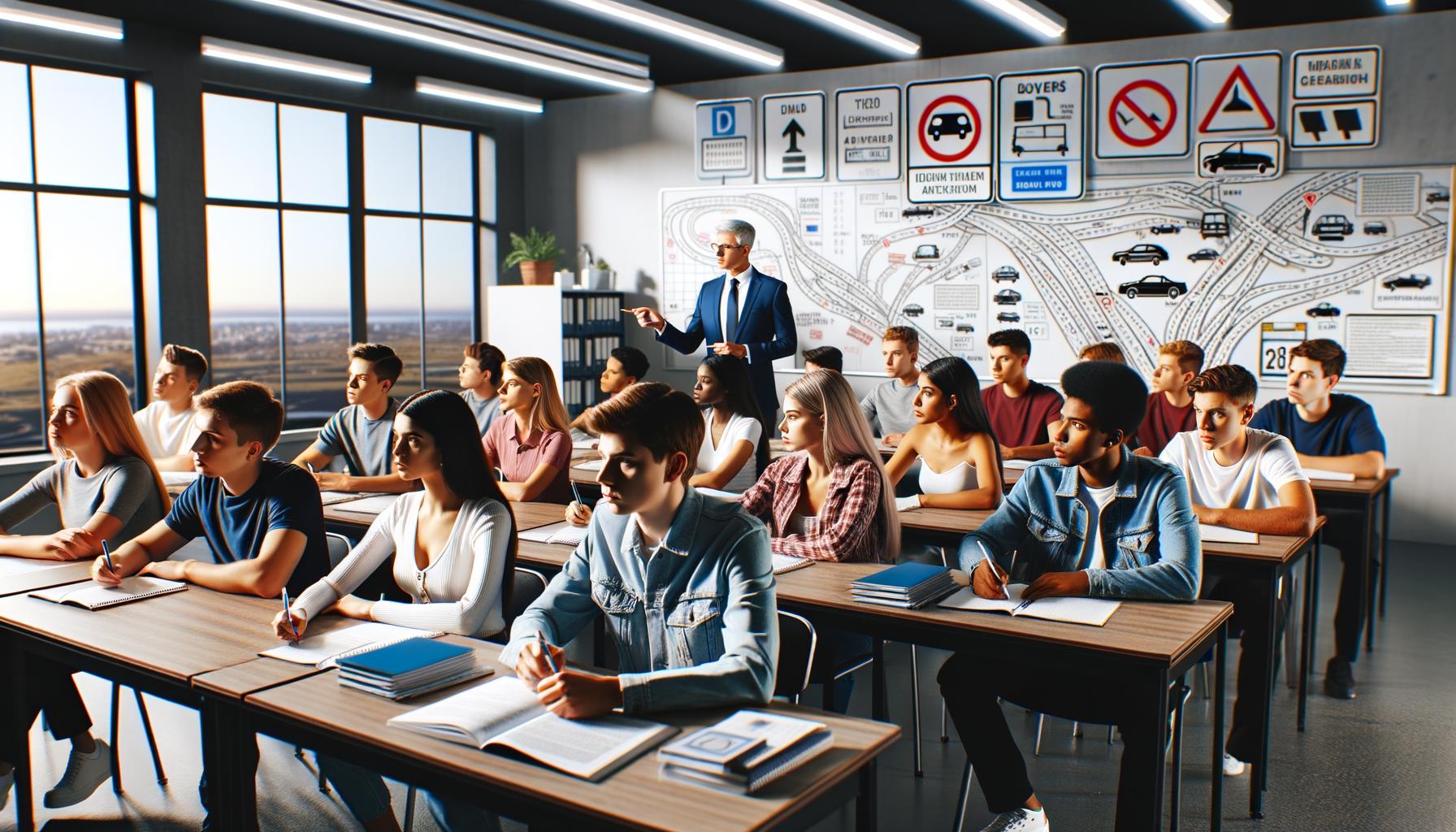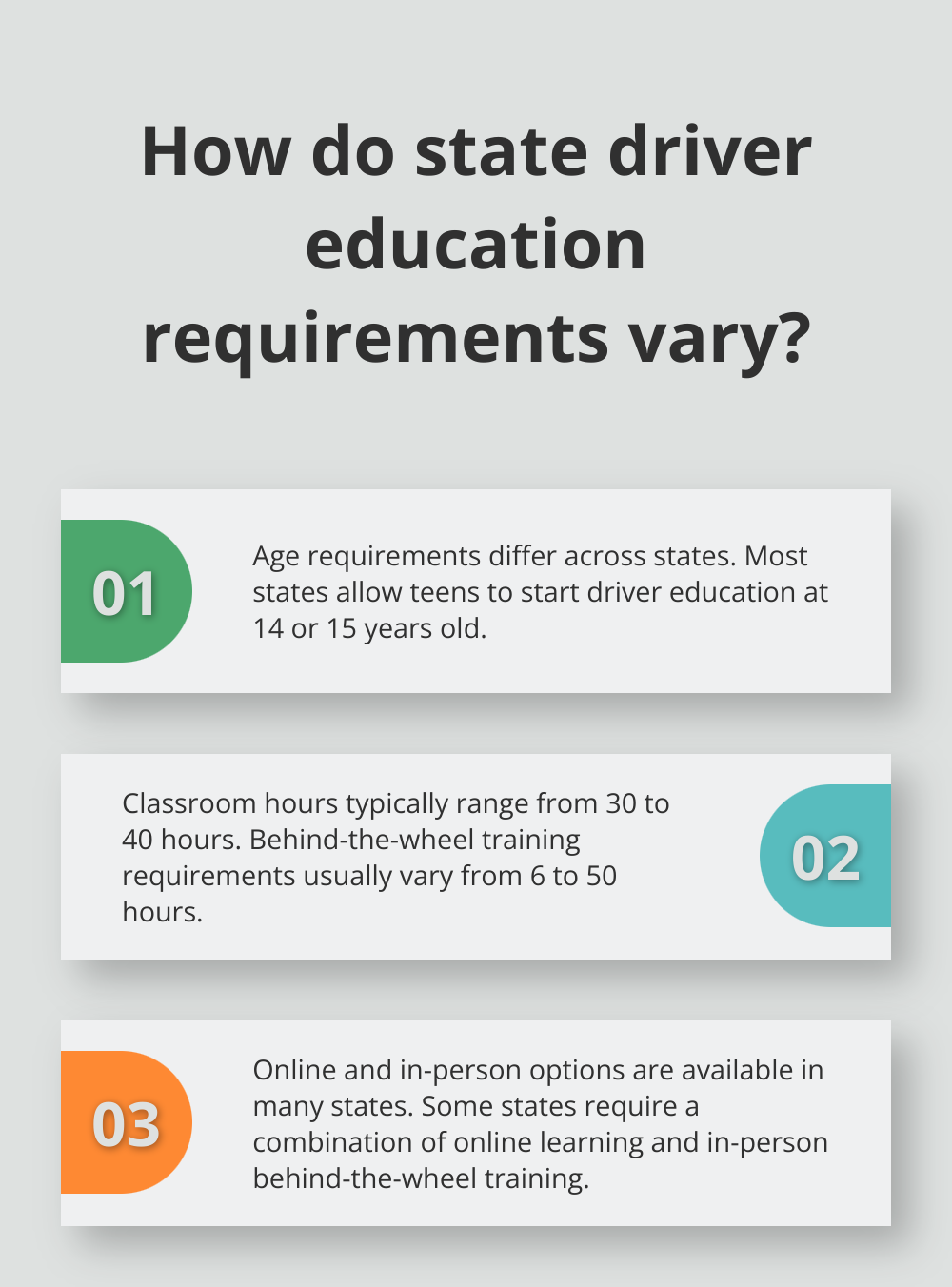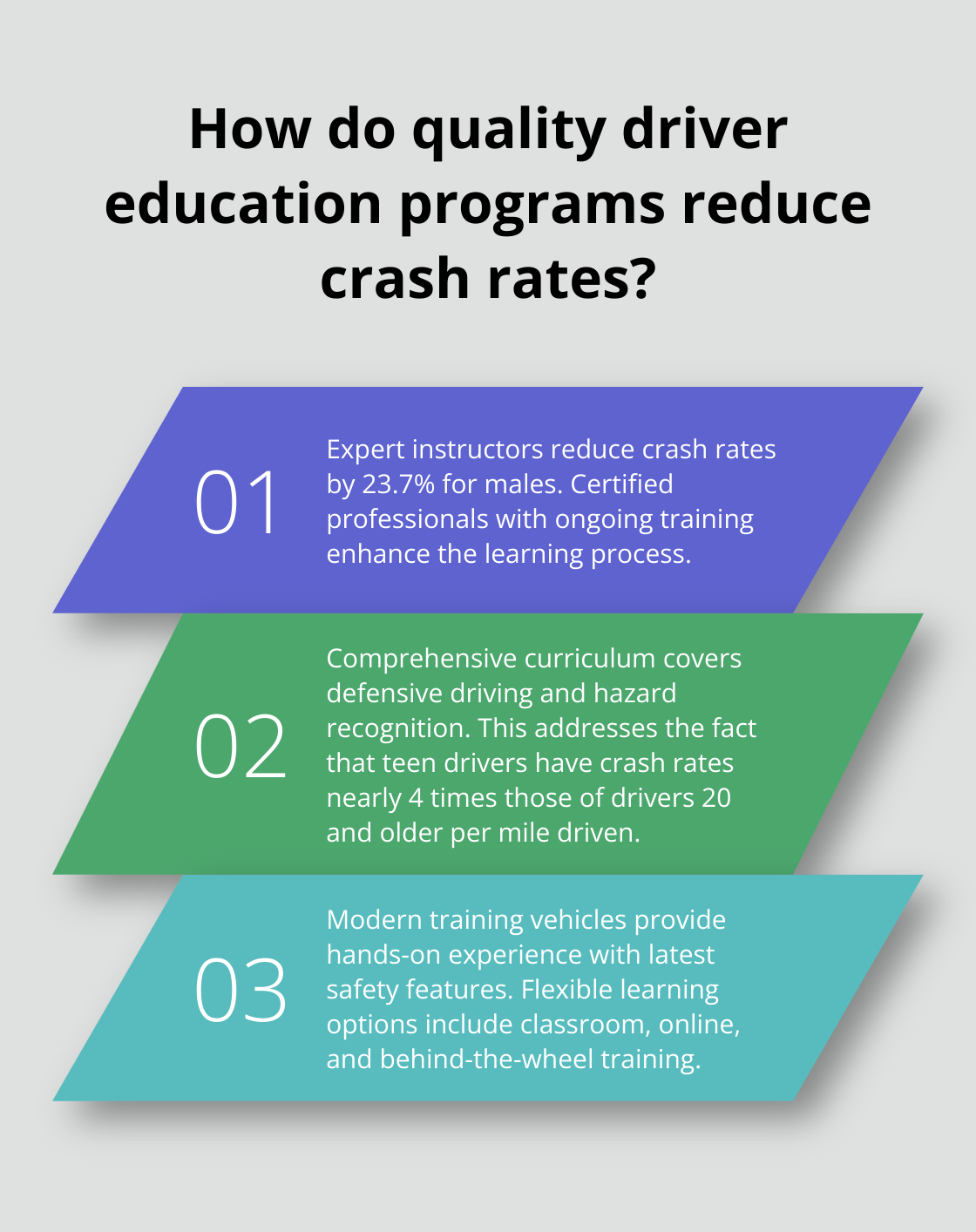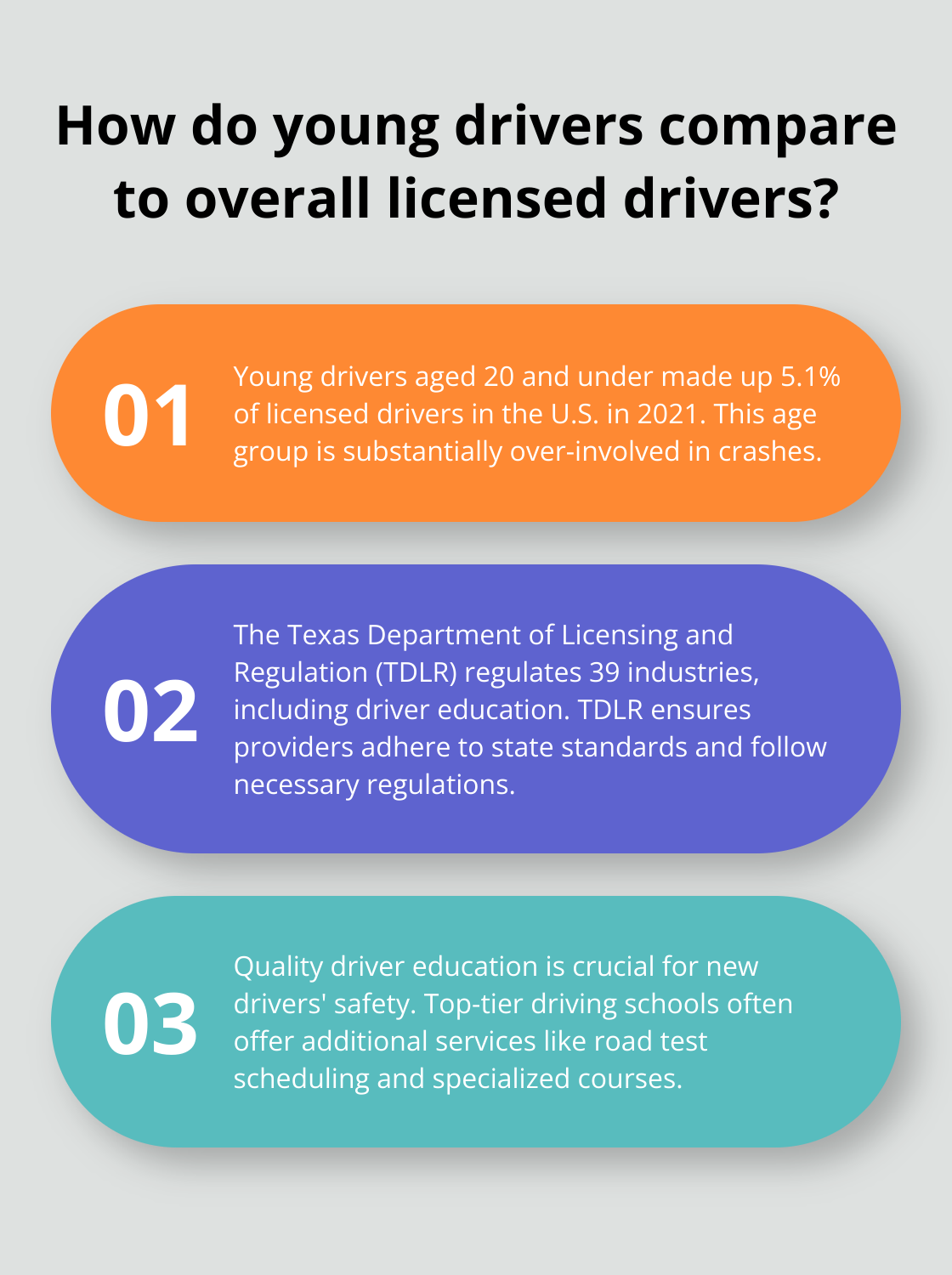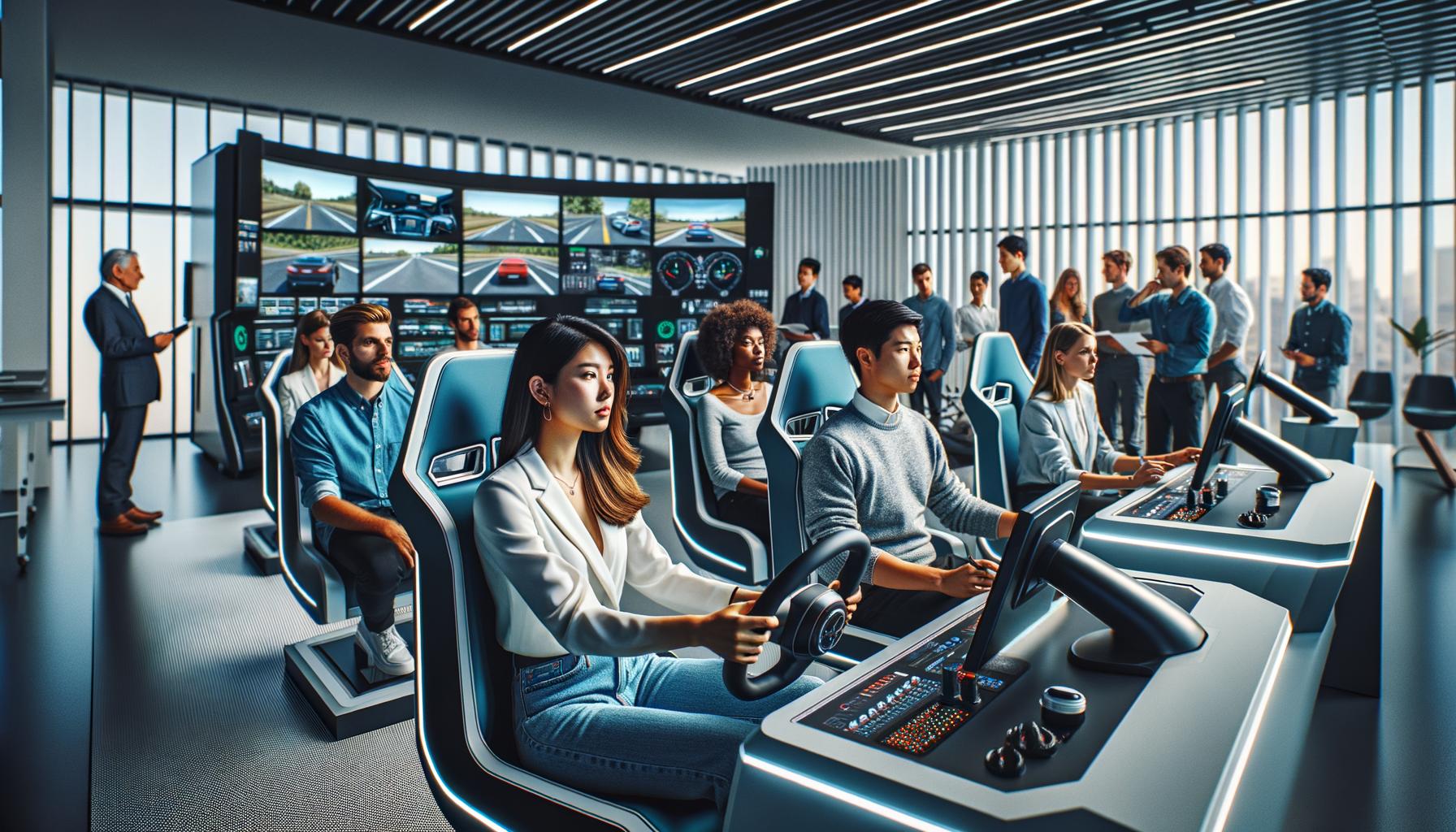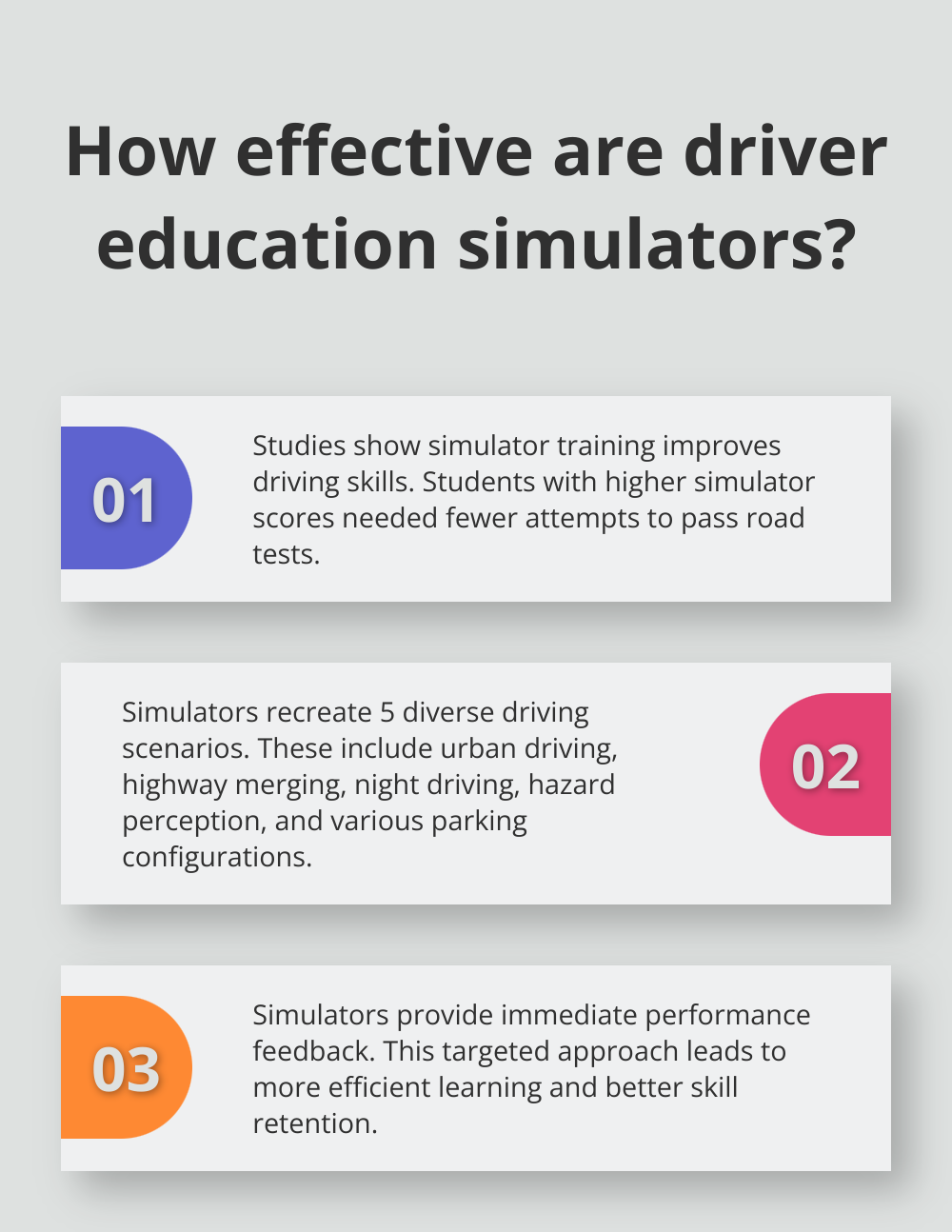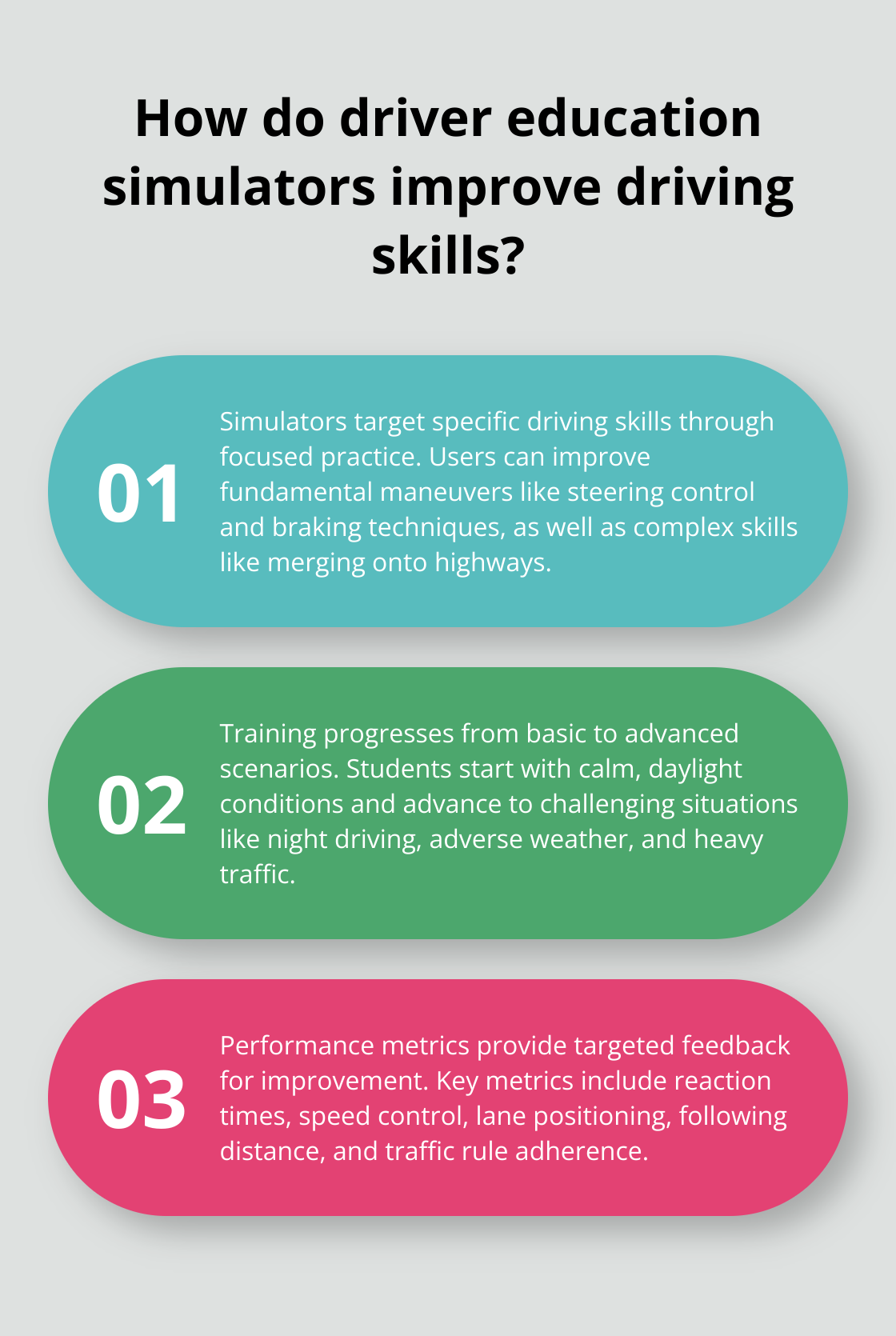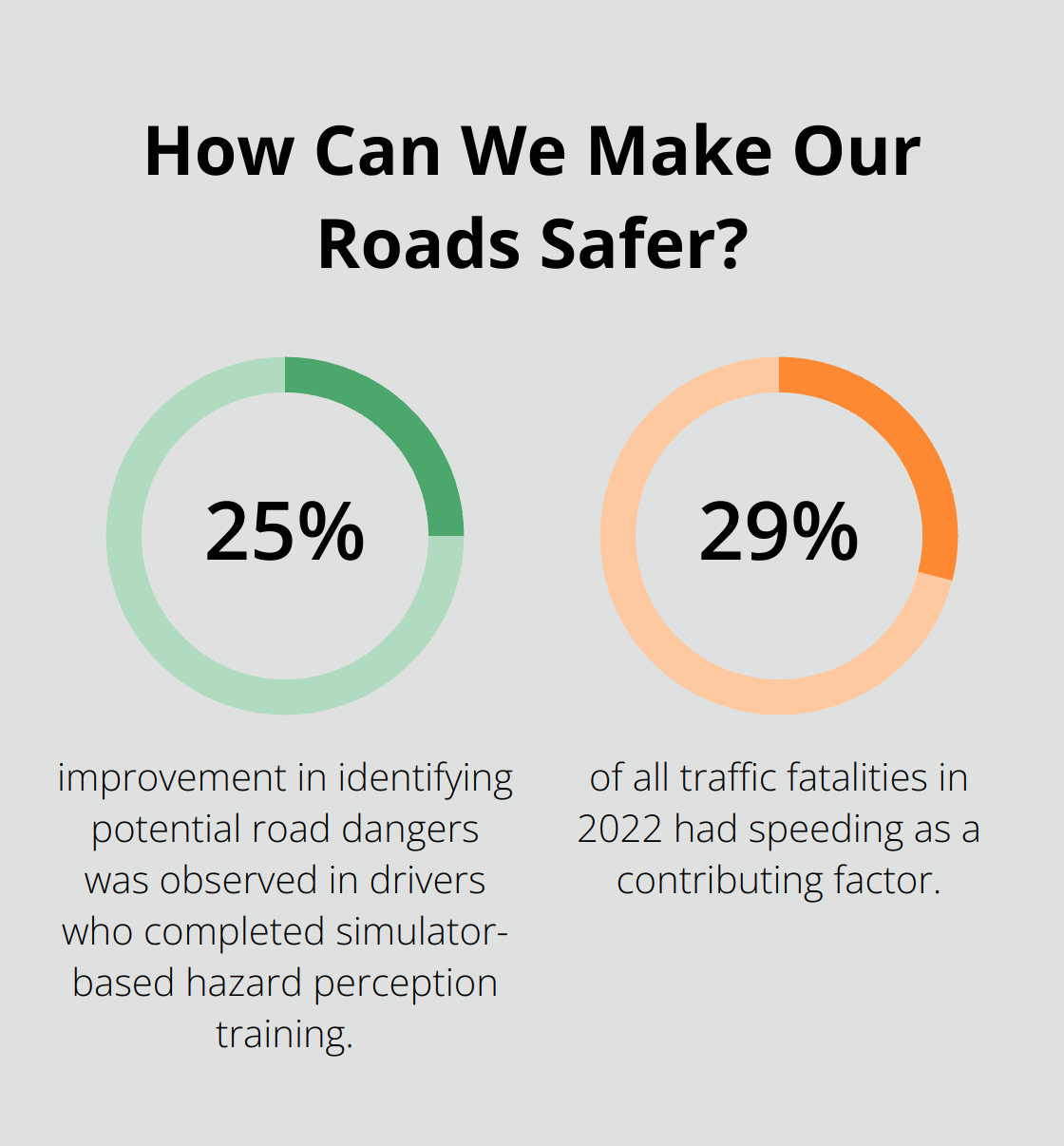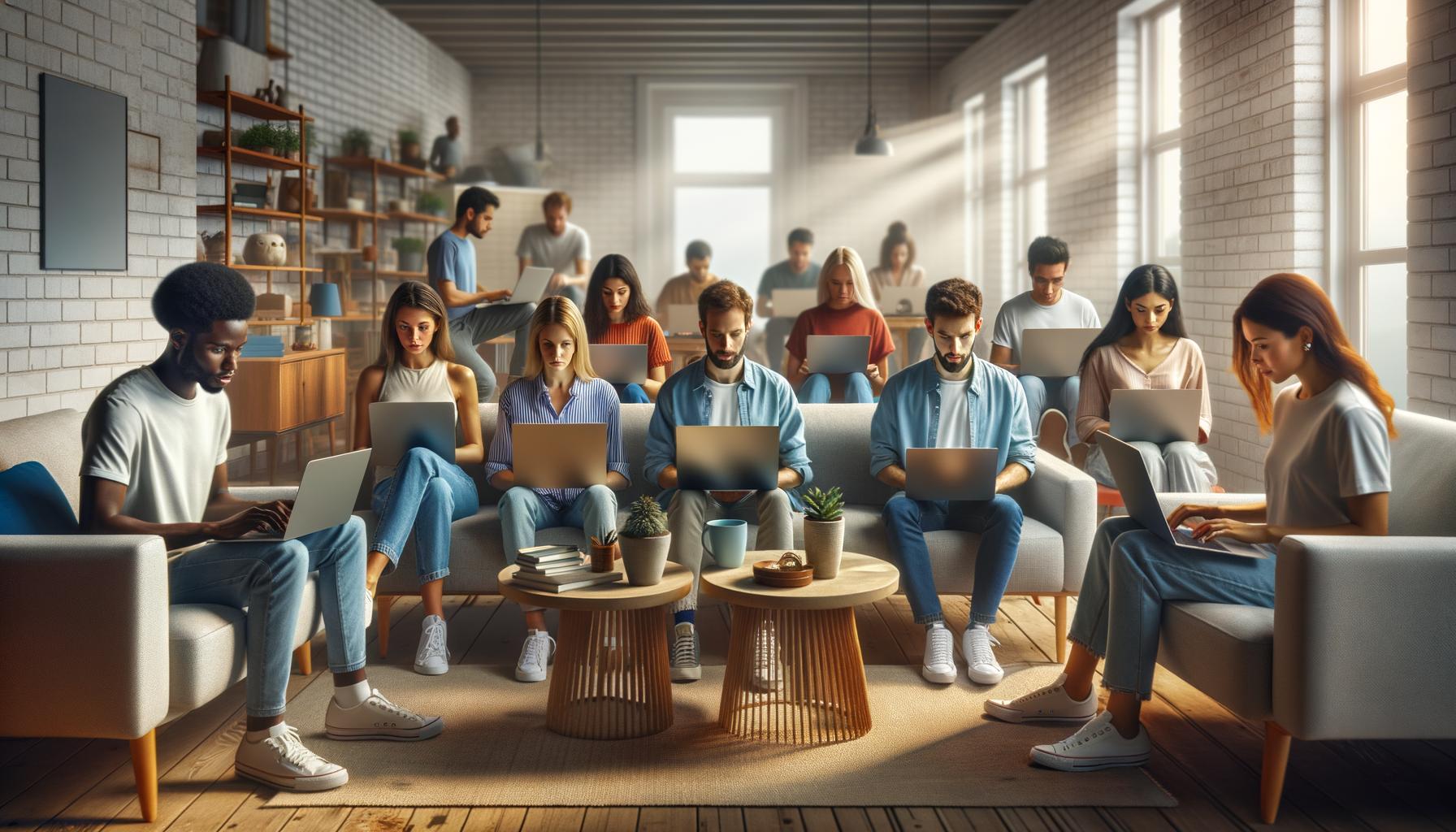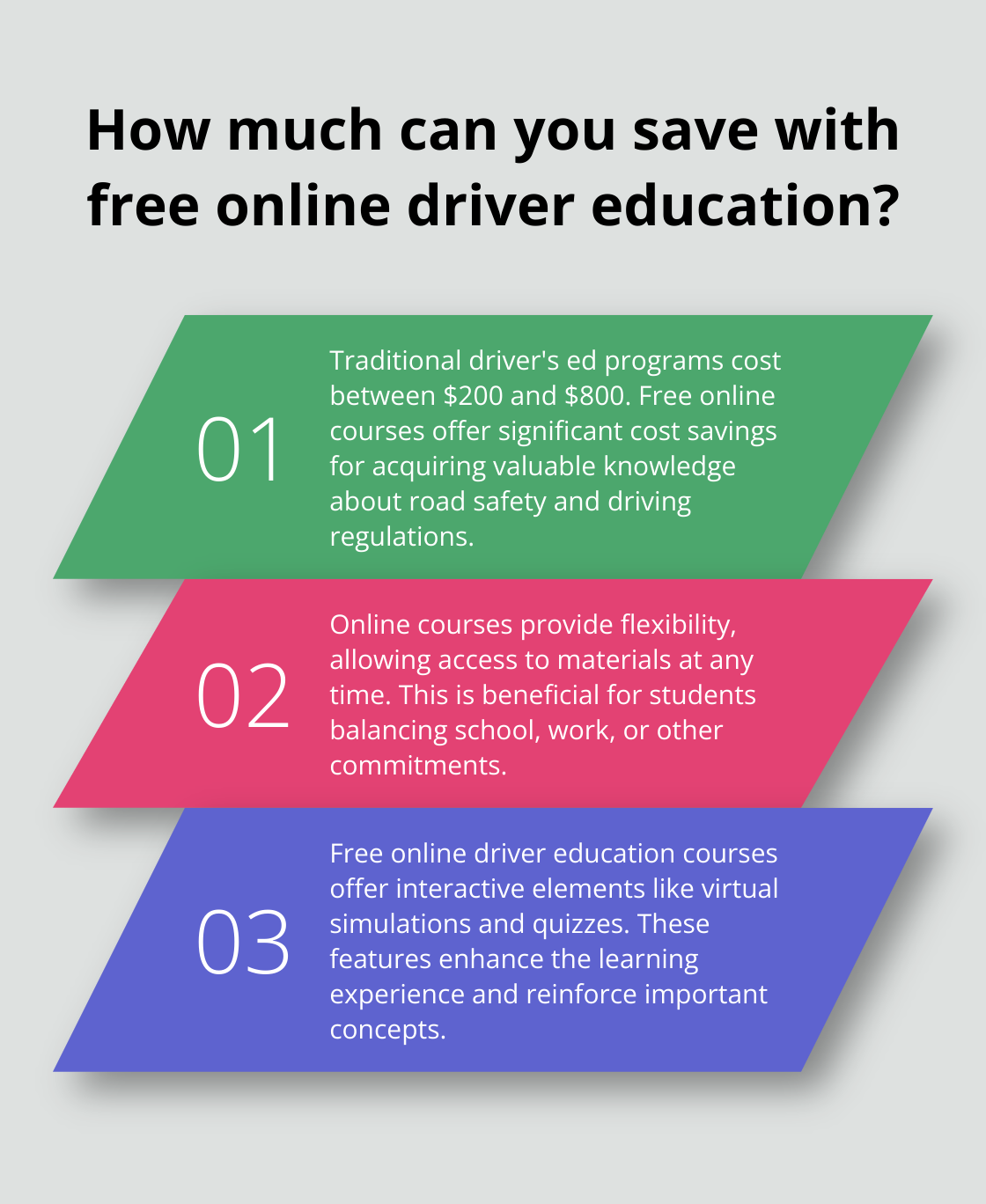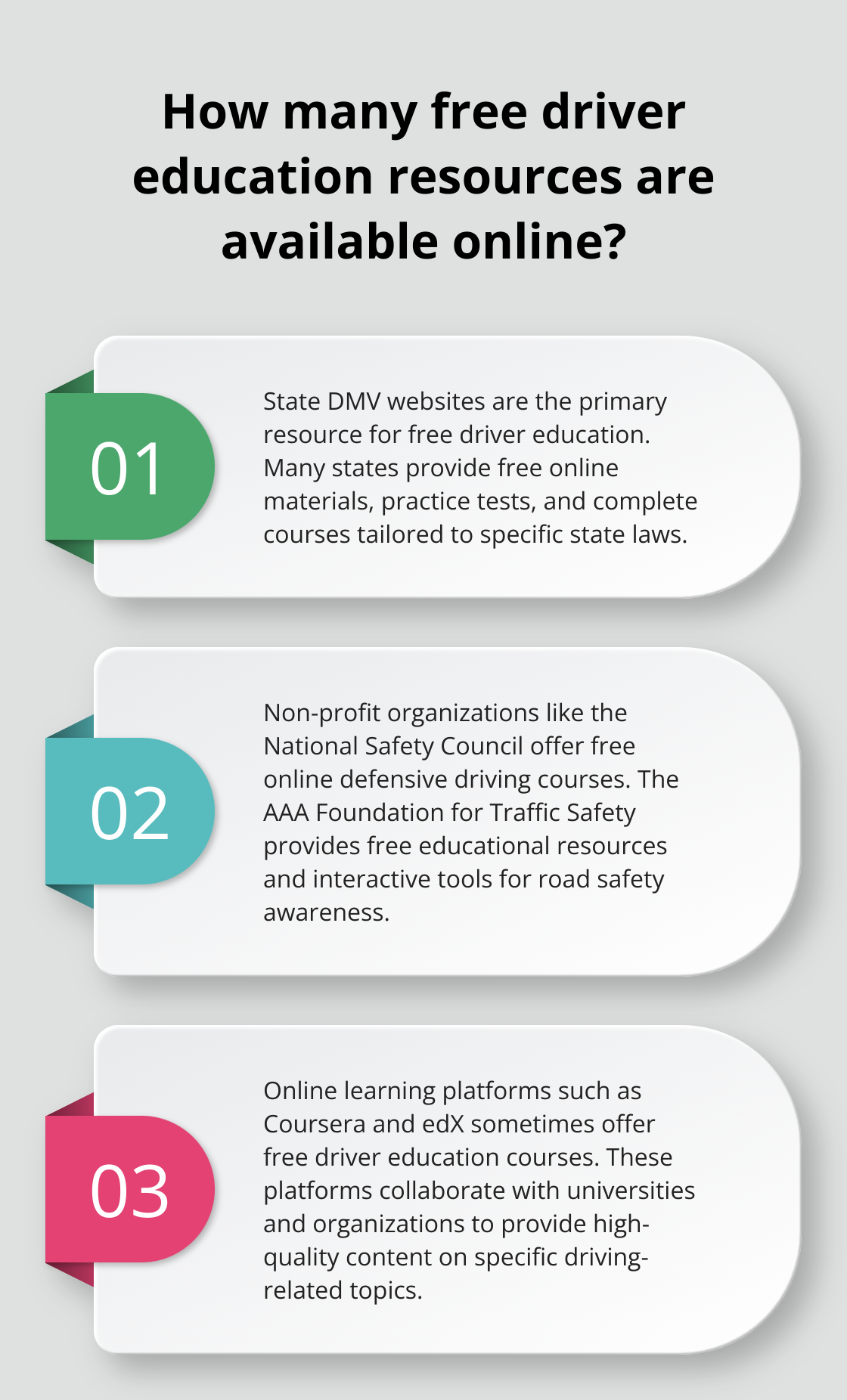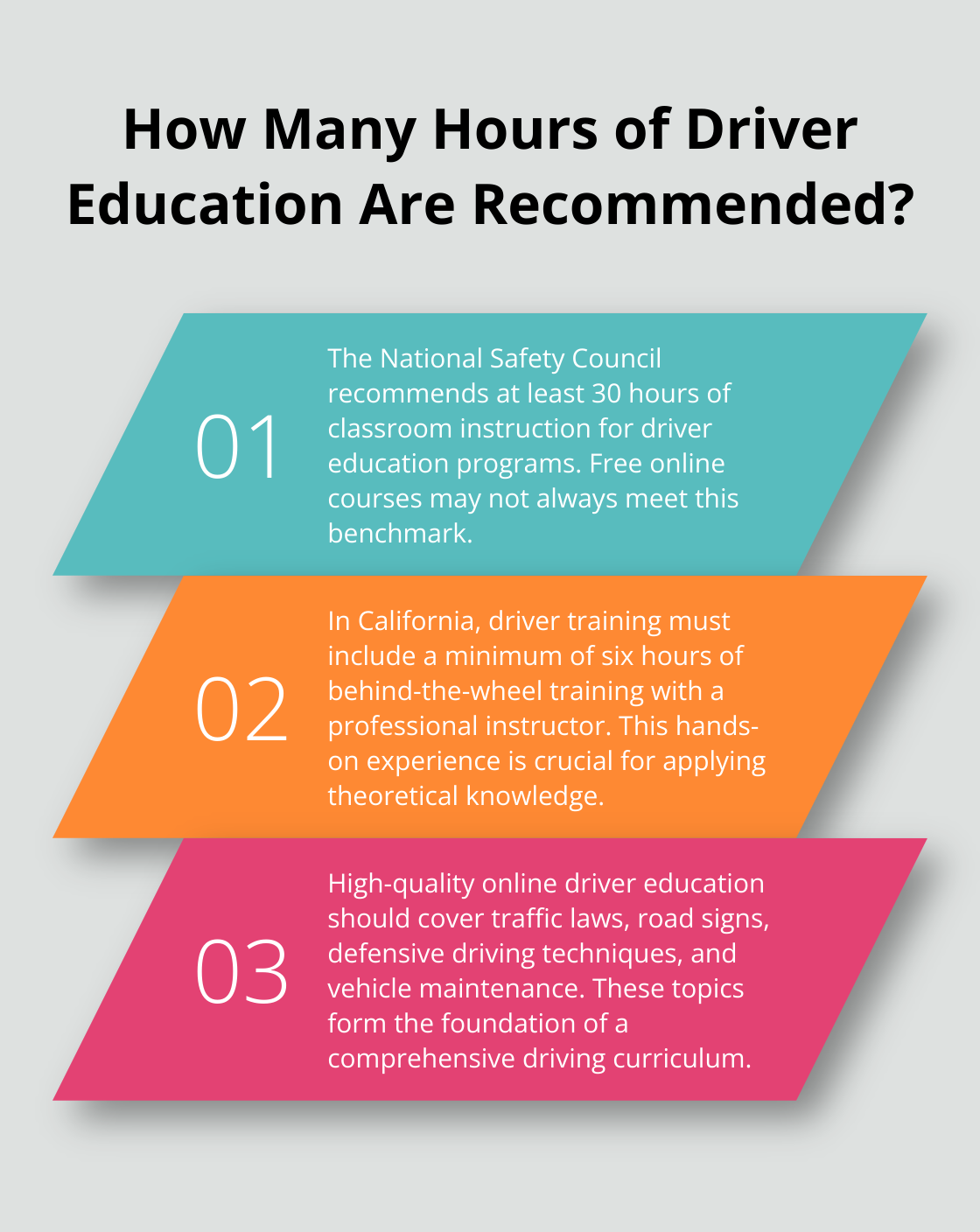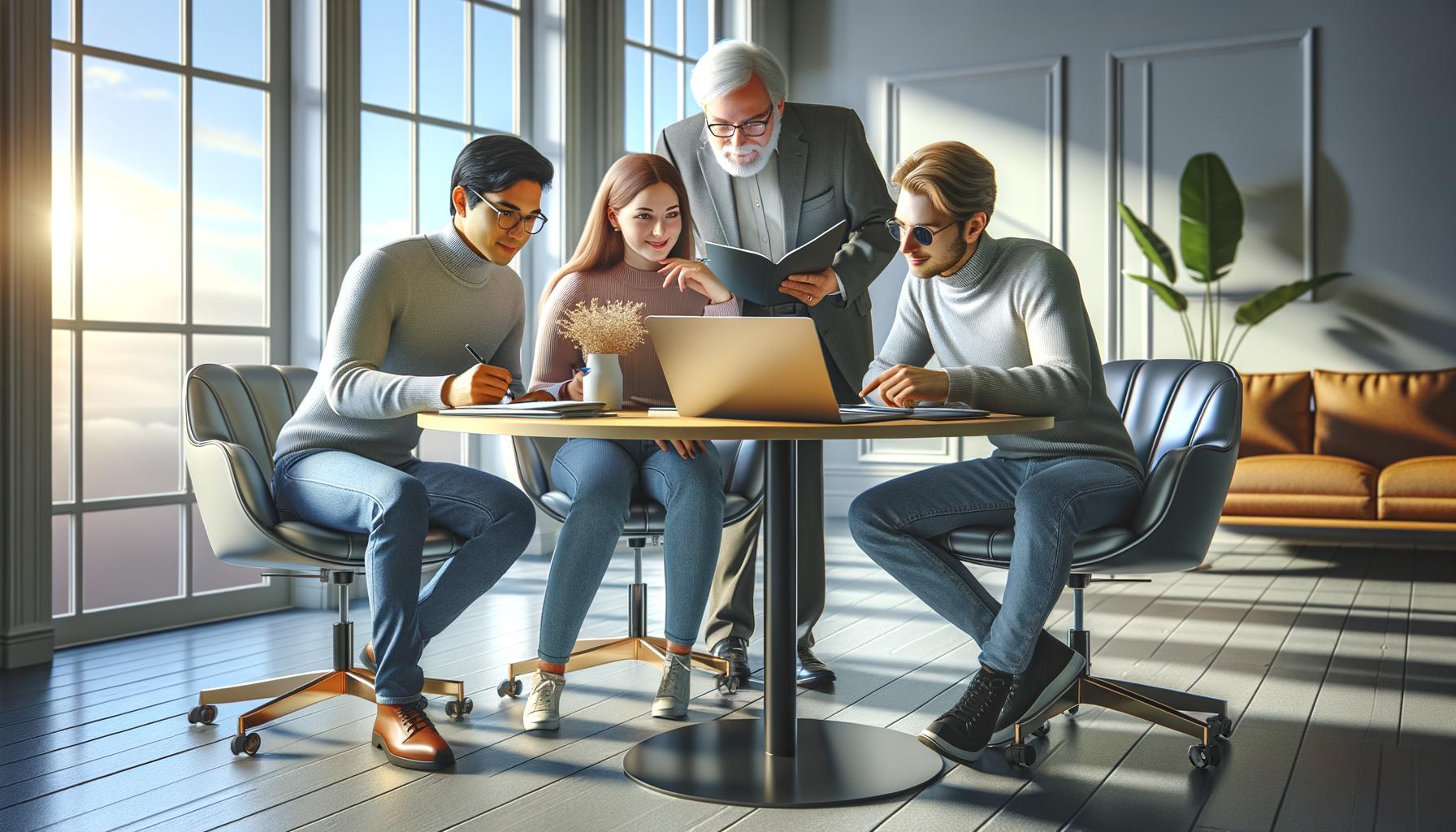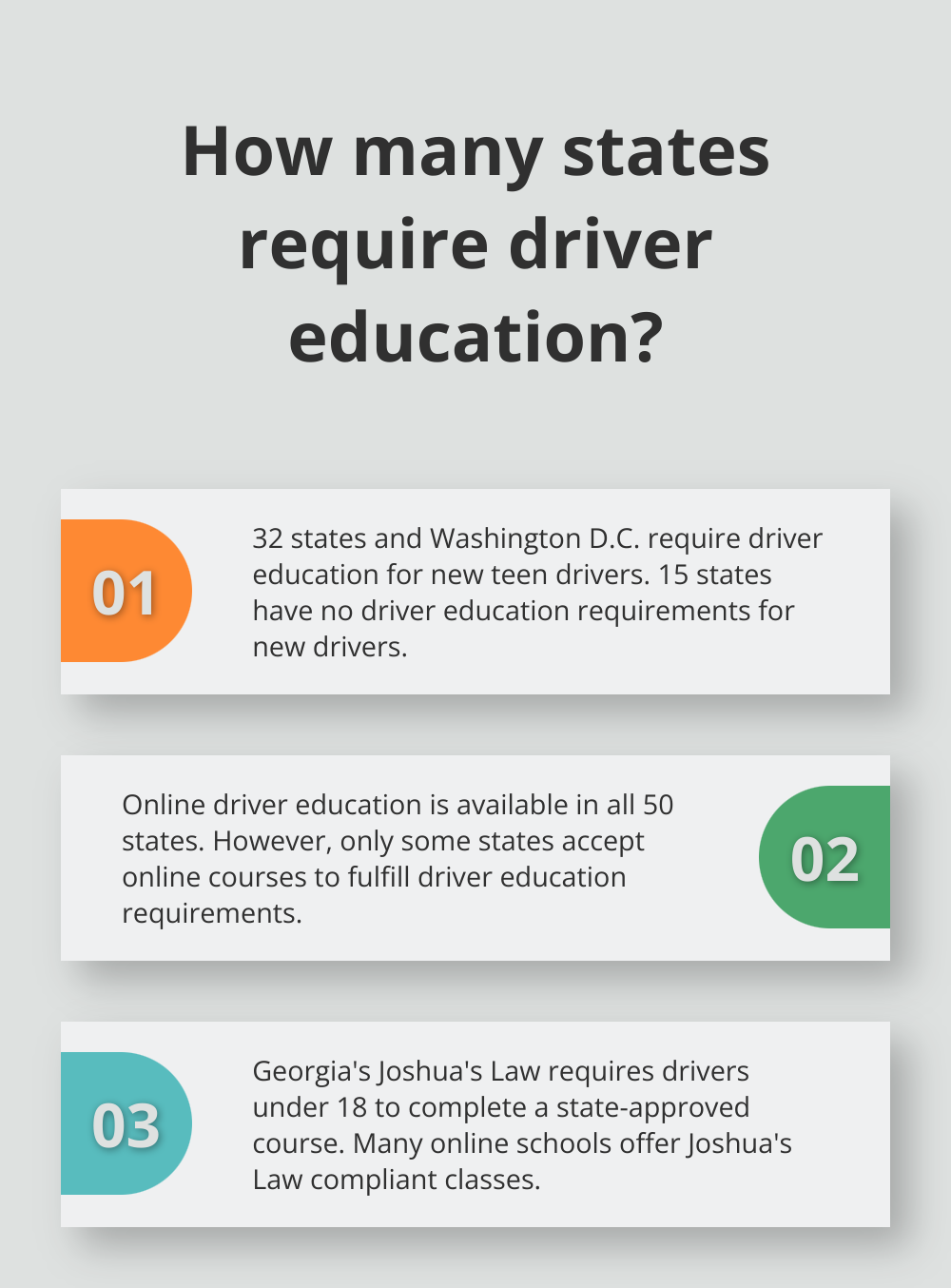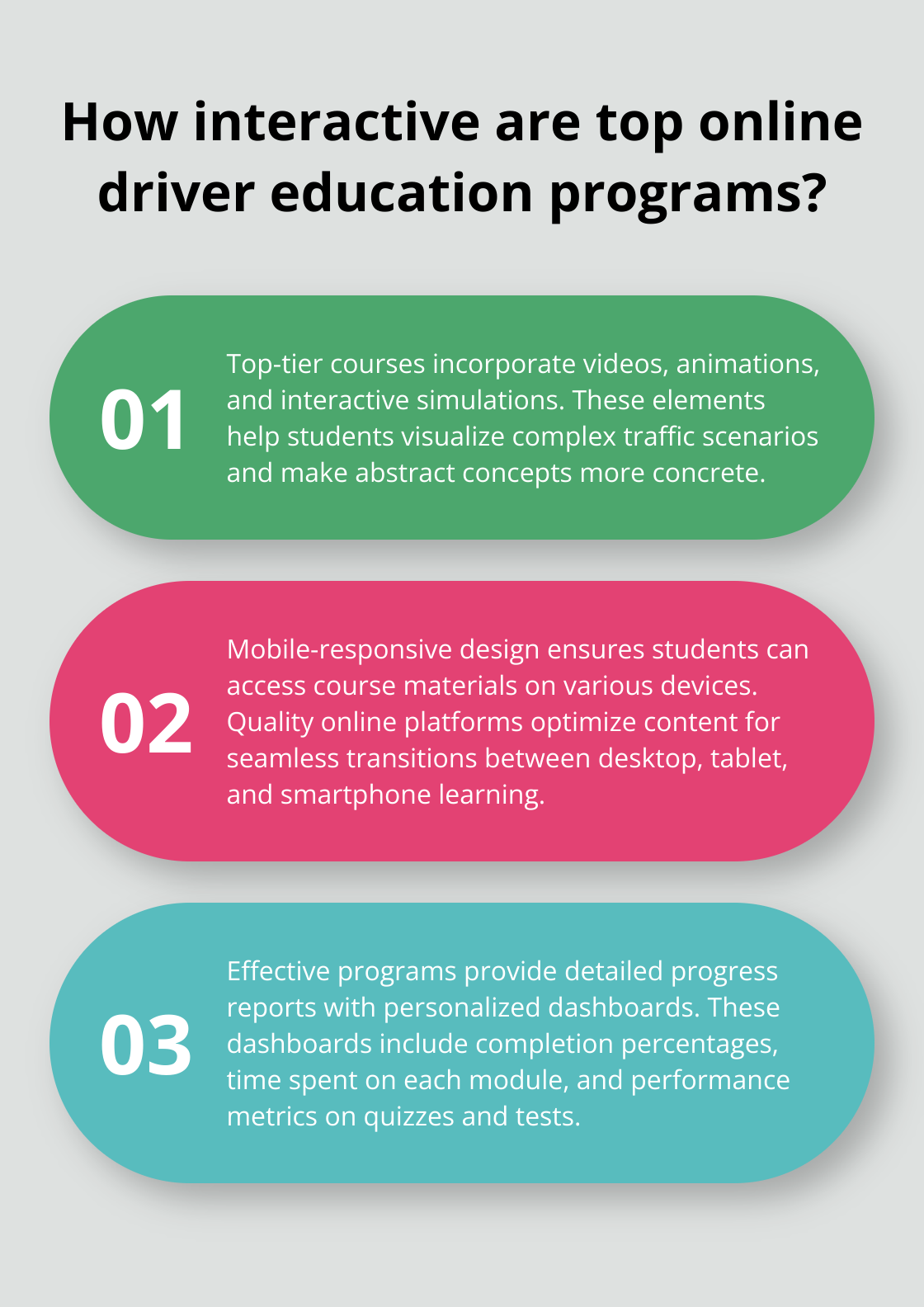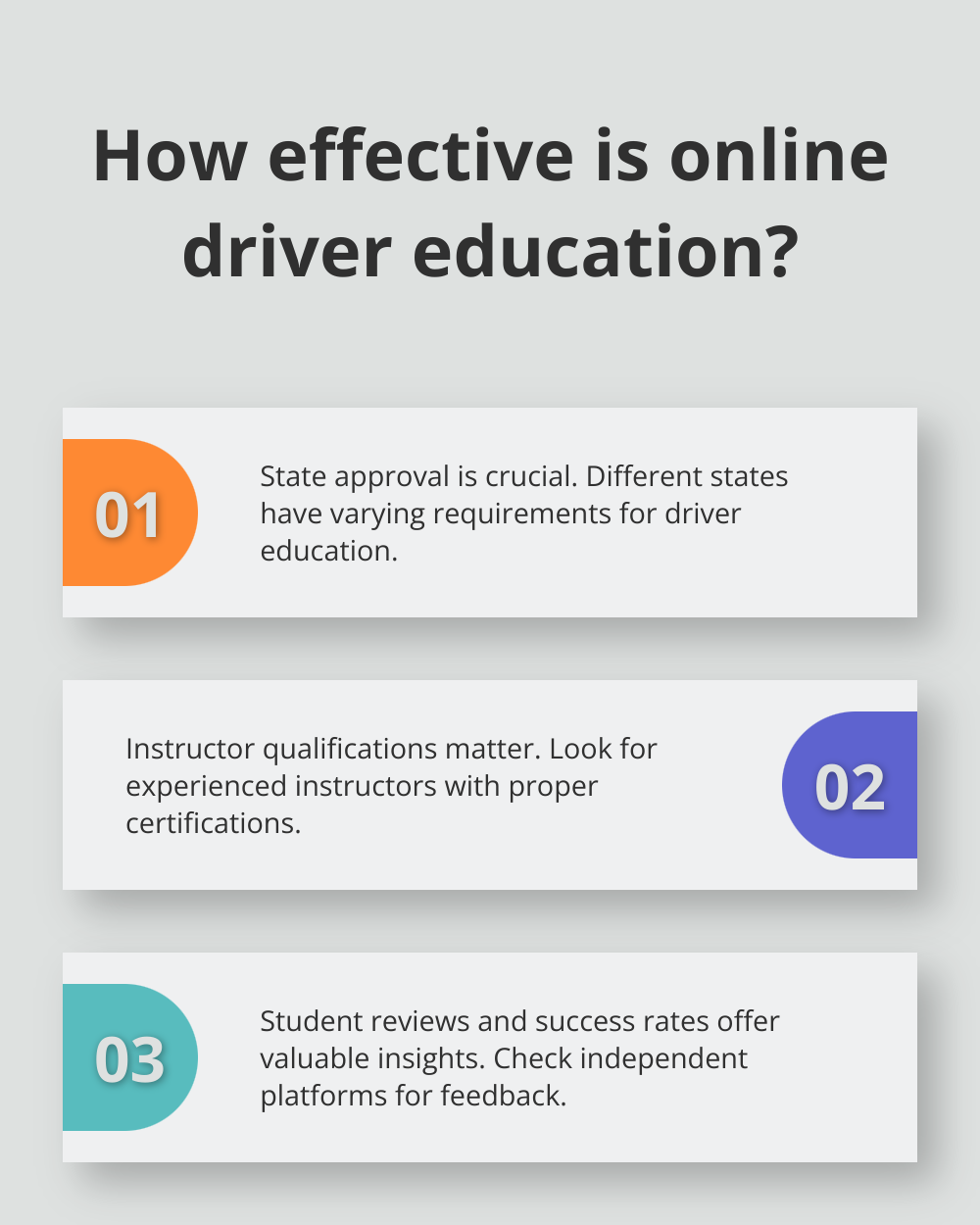How to Complete Georgia’s 6-Hour Defensive Driving Course Online
At The Wiser Driver Driving School, we understand the importance of completing Georgia’s 6-hour defensive driving course online efficiently and effectively.
This guide will walk you through the process, from selecting an approved provider to finishing your final exam.
We’ll share tips to help you manage your time and maximize the benefits of this state-mandated course.
Why Take Georgia’s 6-Hour Defensive Driving Course?
Purpose and Importance
Georgia’s 6-hour defensive driving course aims to improve road safety and driver awareness. This state-mandated program equips drivers with essential skills and knowledge to navigate roads more safely.
Target Audience
Several groups of drivers should consider taking this course:
- Court-ordered participants: Drivers who received a traffic citation may need to complete the course as per court requirements.
- Point reduction seekers: The Georgia Department of Driver Services allows drivers to remove points from their record by completing a certified Driver Improvement (defensive driving) course.
- Insurance discount hunters: Many insurance companies in Georgia offer discounts to drivers who complete a defensive driving course.
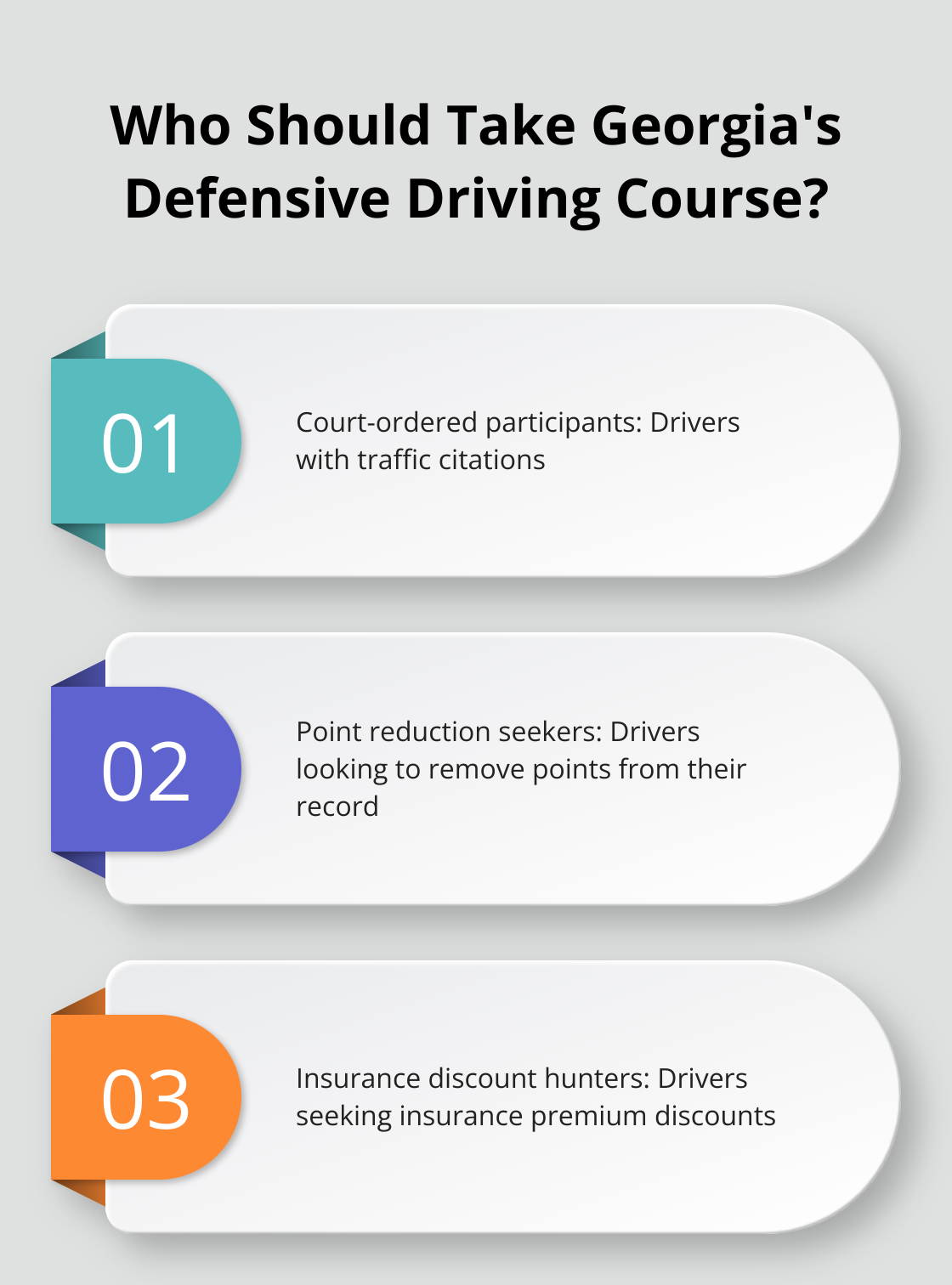
Benefits of Online Completion
Opting for an online course offers numerous advantages:
- Flexibility: Complete the course at your own pace, from any location with internet access.
- Enhanced learning experience: Many online courses (including ours at The Wiser Driver) incorporate interactive elements and multimedia content, such as high-quality video footage of real driving situations.
- Immediate certification: Access completion certificates instantly, allowing for quick submission to insurance companies or courts.
Course Content Overview
The 6-hour defensive driving course typically covers:
- Traffic laws and regulations
- Safe driving techniques
- Hazard recognition and avoidance
- Proper vehicle maintenance
- Effects of alcohol and drugs on driving
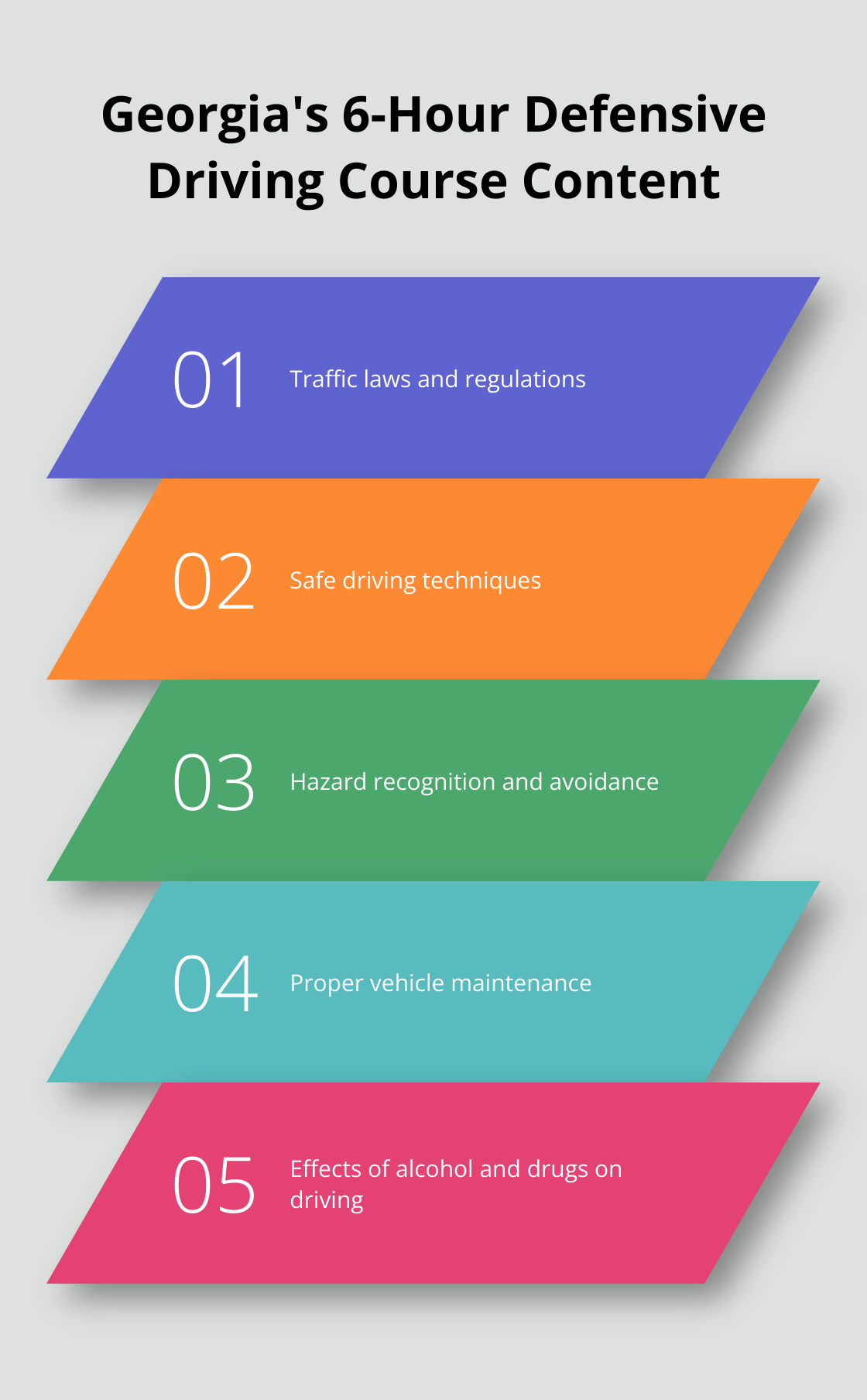
Time Management Tips
To successfully complete the course:
- Set aside dedicated study time
- Break the course into manageable chunks
- Take short breaks to maintain focus
- Use a quiet, distraction-free environment
As you prepare to embark on this valuable learning experience, let’s explore how to choose the right online provider for your Georgia defensive driving course.
How to Choose a State-Approved Online Provider for Georgia’s Defensive Driving Course
Verify State Approval and Accreditation
The Georgia Department of Driver Services (DDS) maintains strict standards for online defensive driving course providers. Always check the DDS website for a list of certified Driver Improvement Schools. This step ensures you select a provider that meets all state requirements for delivering high-quality defensive driving education.
Look for a User-Friendly Interface and Mobile Compatibility
A good online course should offer easy navigation and accessibility on various devices. Try to find providers with mobile-friendly platforms that allow you to study on your smartphone or tablet. This feature proves especially beneficial for those with busy schedules or who prefer to learn on the go.
Seek Interactive Content and Engaging Materials
Effective online courses transcend text-based learning. They incorporate interactive elements, videos, and real-life driving scenarios to keep you engaged. Look for courses that include high-quality video content (such as in-car and drone footage) to present realistic driving situations you’ll likely encounter on Georgia roads.
Check for Progress Tracking and Pause-and-Resume Functionality
Select a provider that allows you to track your progress and offers the ability to pause and resume the course at your convenience. This feature proves particularly helpful if you need to complete the course in multiple sessions, ensuring you can fit the learning into your schedule without losing progress.
Evaluate Customer Support and Technical Assistance
Reliable customer support is essential when taking an online course. Look for providers that offer extended support hours and multiple contact methods. Some providers (like The Wiser Driver) offer customer support from 8 AM to midnight, ensuring you can get help when you need it most.
Consider Certificate Delivery Speed
After completing your course, you’ll want to receive your certificate promptly. Some providers offer immediate certificate delivery upon course completion. This quick turnaround is particularly important if you’re taking the course for court-ordered reasons or to qualify for insurance discounts.
Now that you know how to choose the right online provider, let’s move on to the step-by-step process of completing Georgia’s 6-hour defensive driving course online.
How to Complete Georgia’s Online Defensive Driving Course
Registration and Course Access
To start your online defensive driving course, visit the website of a state-approved provider. You’ll find a registration form on the homepage. Fill in your basic information (name, email address, and driver’s license number). After registration, you’ll receive immediate access to the course materials.
Course Structure and Content
The course divides into several modules, each focusing on specific aspects of defensive driving:
- Traffic laws and regulations
- Safe driving techniques
- Hazard recognition and avoidance
- Effects of impaired driving
- Proper vehicle maintenance
Each module contains a mix of text, videos, and interactive elements. These components keep you engaged and enhance your learning experience. Many providers use high-quality video content, such as in-car and drone footage, to present realistic driving situations you’ll encounter on Georgia roads.
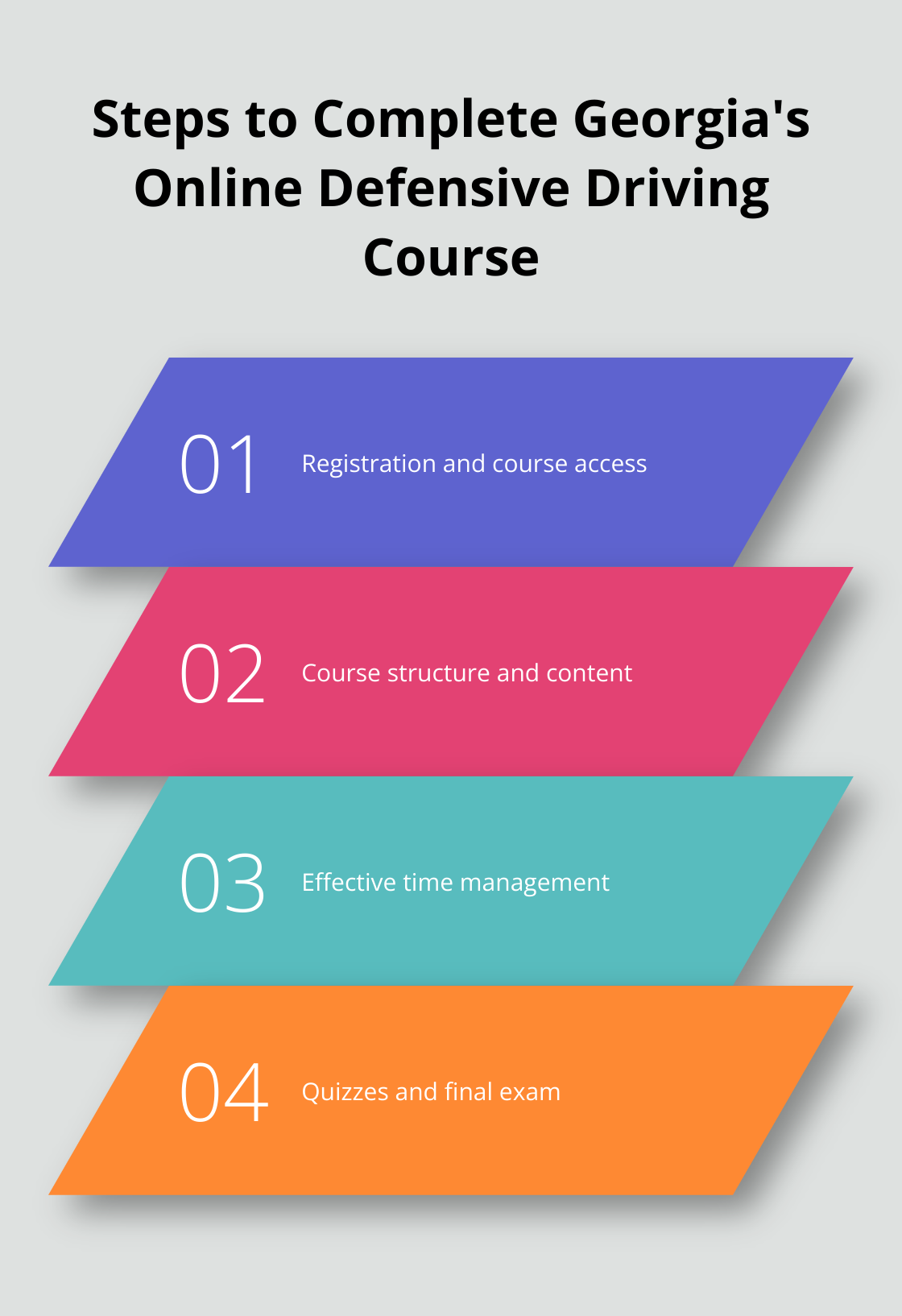
Effective Time Management
The course duration may vary depending on the provider. Here are some effective strategies for managing your time:
- Set aside dedicated blocks of time for studying
- Take short breaks between modules to maintain focus
- Use a quiet, distraction-free environment to maximize concentration
- Use the pause and resume feature if you need to step away
The goal is to absorb the information and improve your driving skills, not just to finish quickly.
Quizzes and Final Exam
Throughout the course, you’ll encounter short quizzes to reinforce your learning. These are typically multiple-choice and serve as checkpoints to ensure you grasp the material. If you don’t pass a quiz on your first try, you can usually retake them until you achieve a passing score.
The final exam covers all the material from the course. Most providers require a score of 80% or higher to pass. Some providers offer a practice exam to help you prepare and feel confident before taking the final test.
After you successfully complete the final exam, you’ll receive your certificate of completion. You can usually download this immediately and submit it to the court or your insurance company as needed.
Final Thoughts
Completing Georgia’s 6-hour defensive driving course online provides numerous benefits and is a straightforward process. The online format allows you to learn at your own pace from the comfort of your home or office. You’ll receive a certificate of completion, which you can submit to the Georgia Department of Driver Services for license point reduction or to your insurance company for potential premium discounts.
At The Wiser Driver Driving School, we understand the importance of quality driver education. Our comprehensive programs aim to boost your driving confidence and skills, regardless of your age or experience level. We offer state-required Joshua’s Law classes, personalized driving lessons, and defensive driving courses for license points reduction.
The Wiser Driver Driving School supports your journey towards becoming a safer, more confident driver. Our experienced instructors and convenient services, including seven-day-a-week road testing and pick-up/drop-off options, make us your trusted partner in driver education. Safe driving is an ongoing commitment, and the knowledge you gain from the 6-hour defensive driving course online in Georgia should be applied every time you drive.


